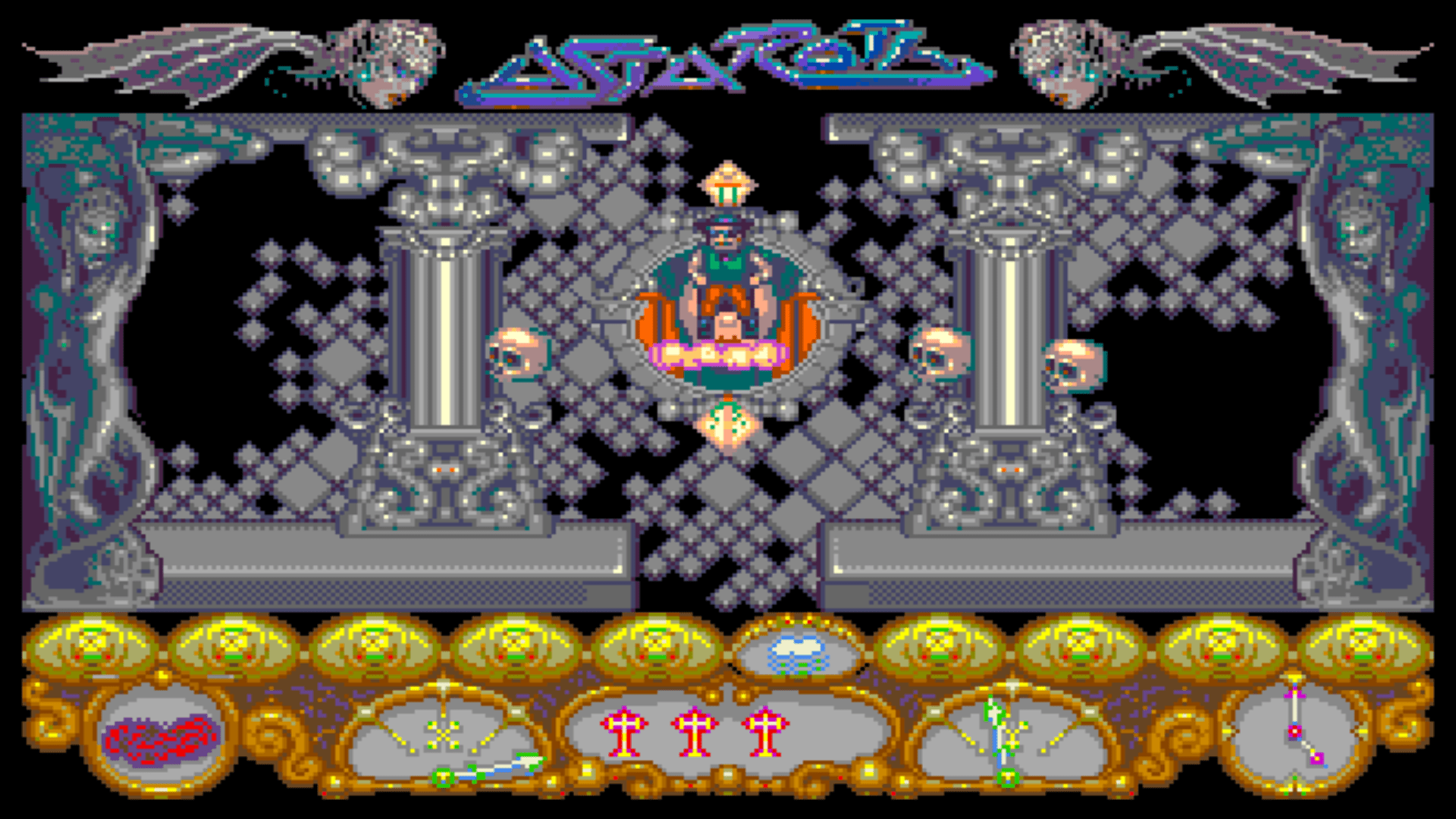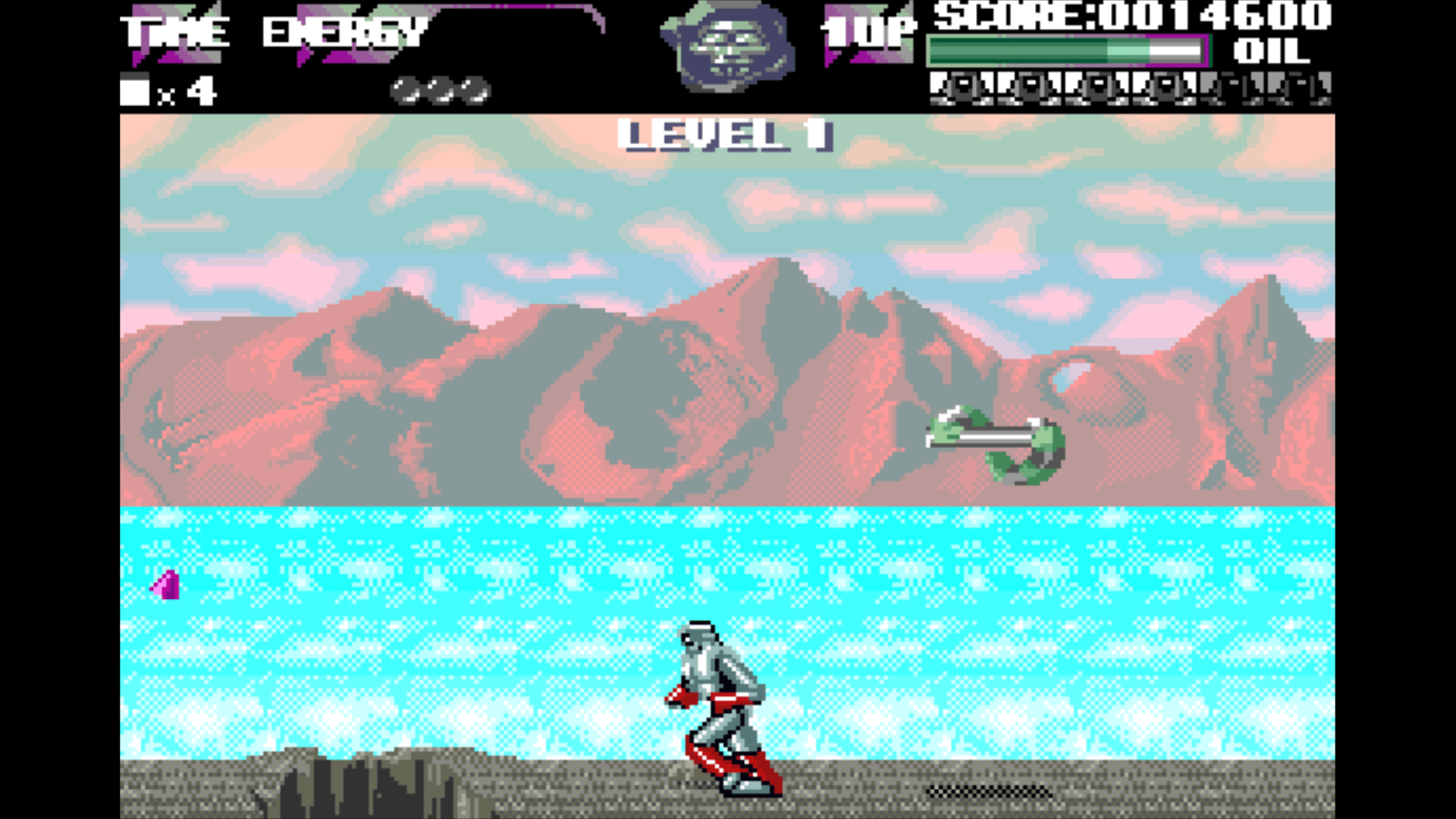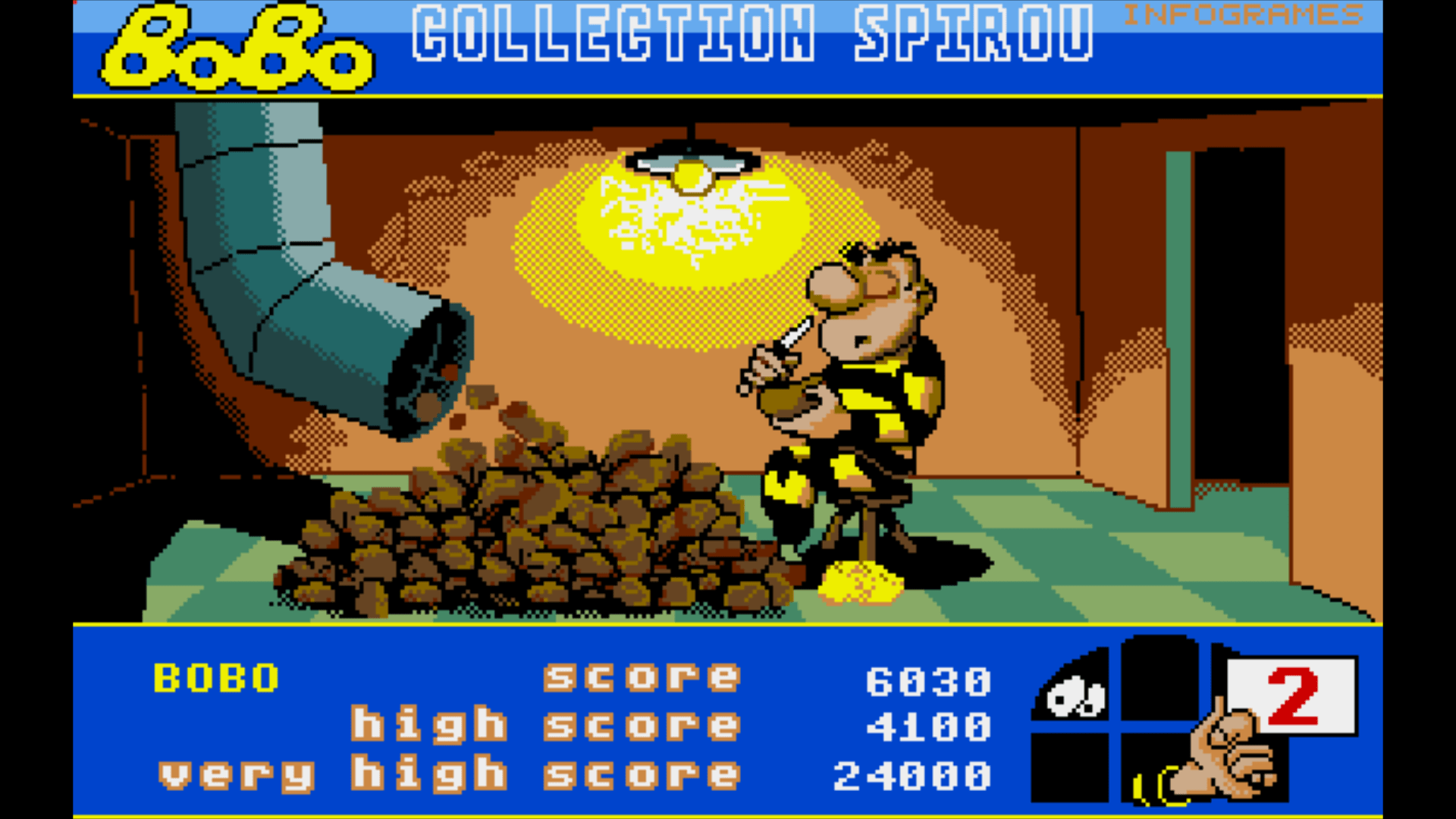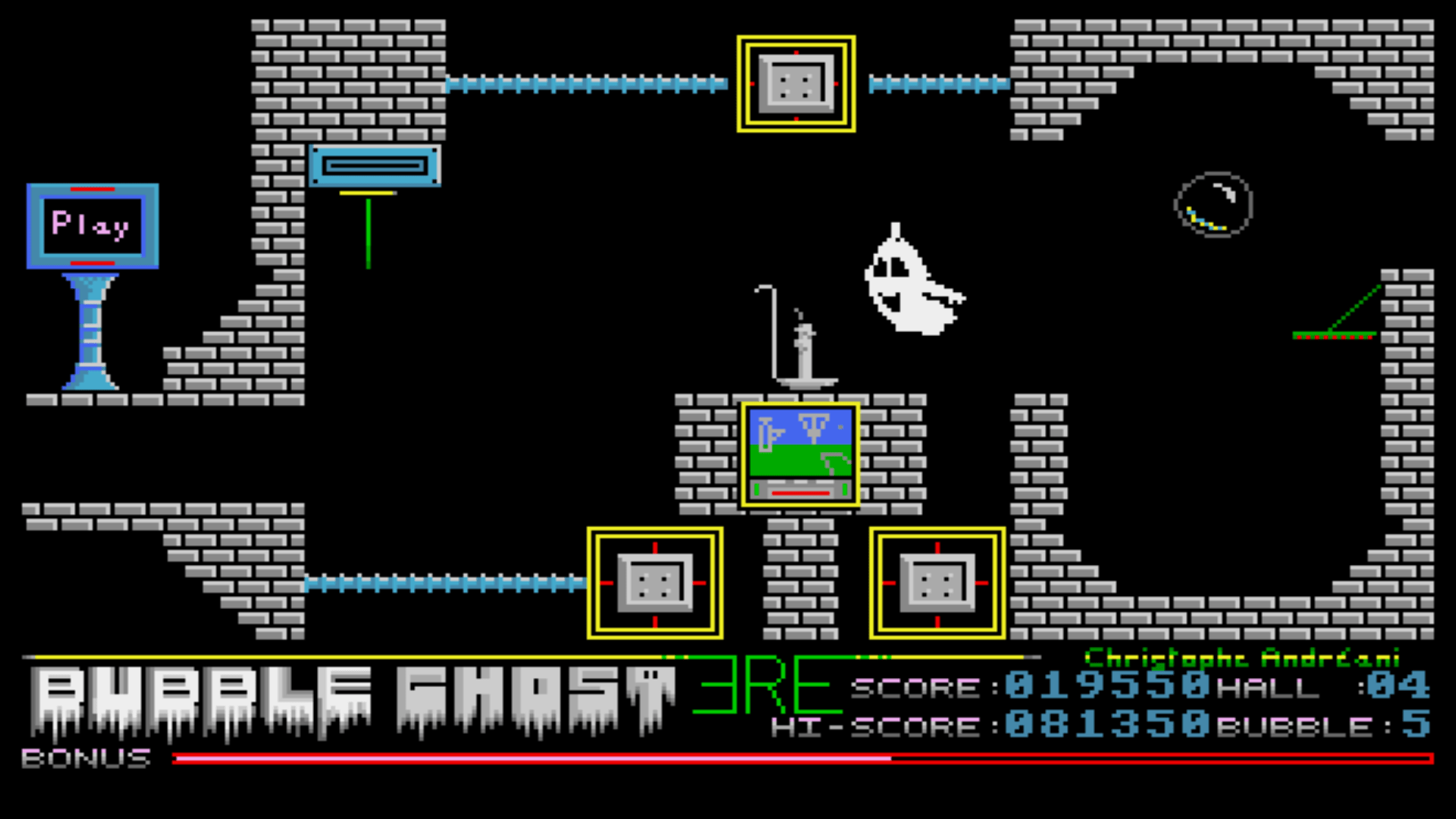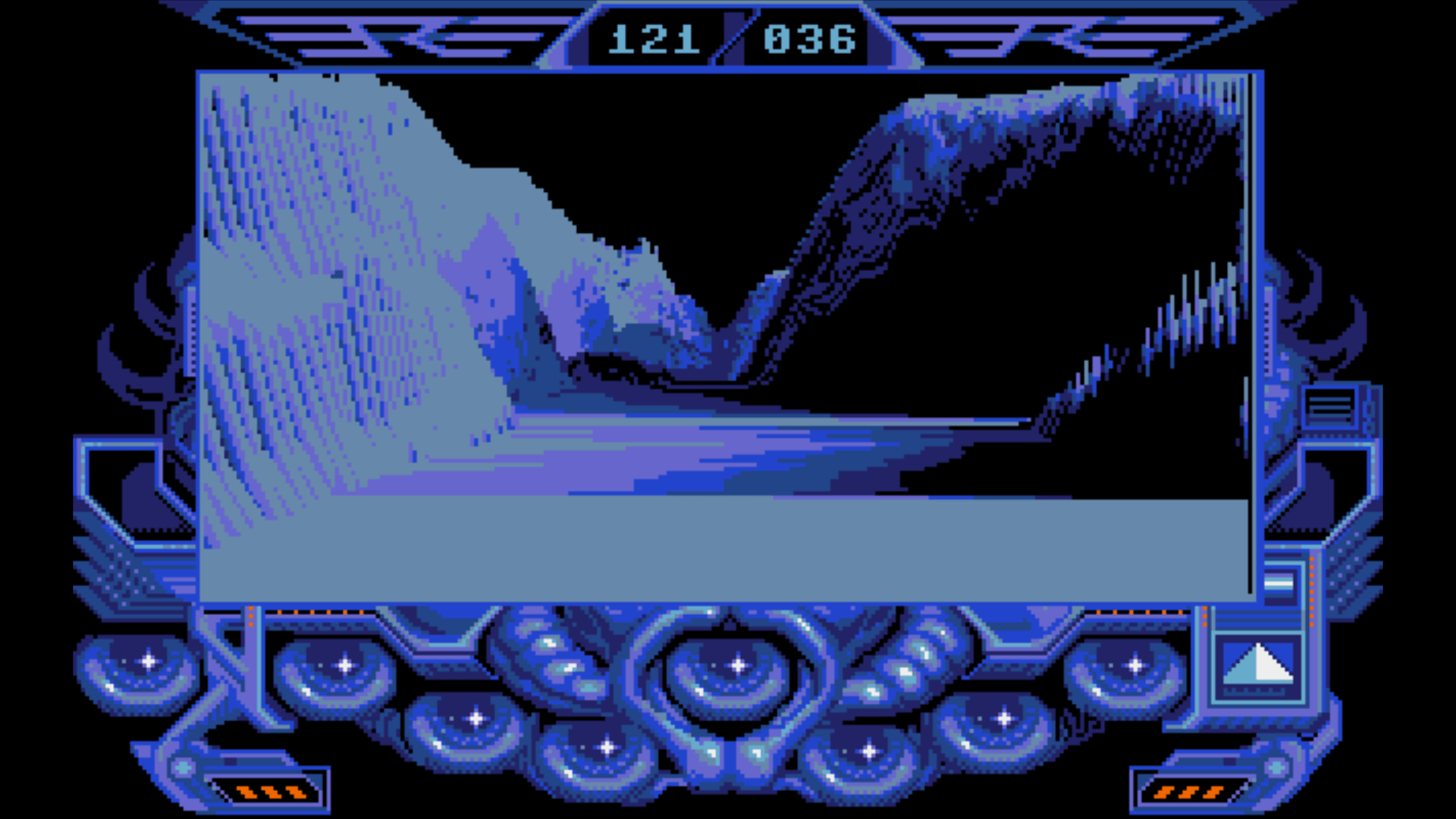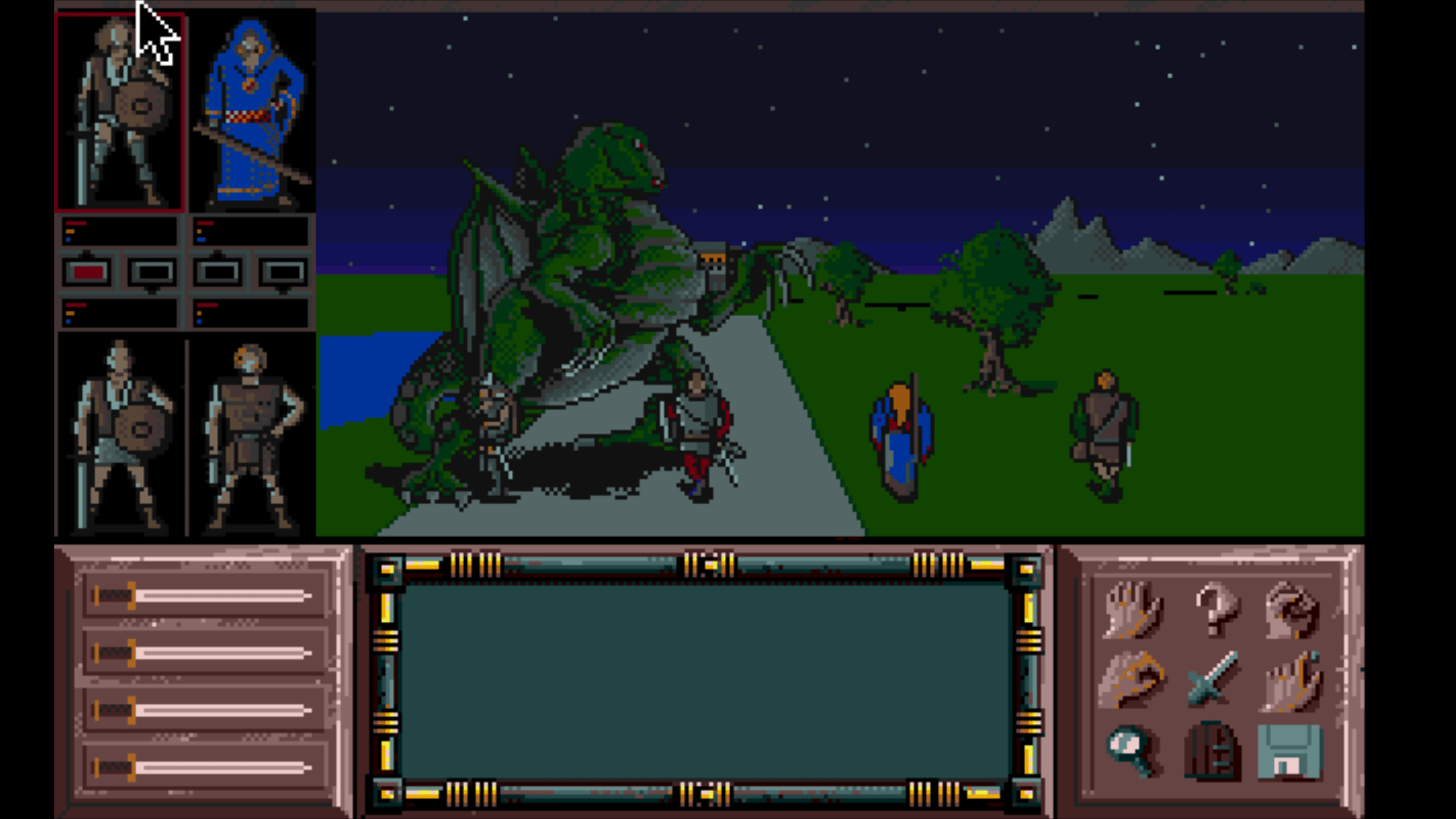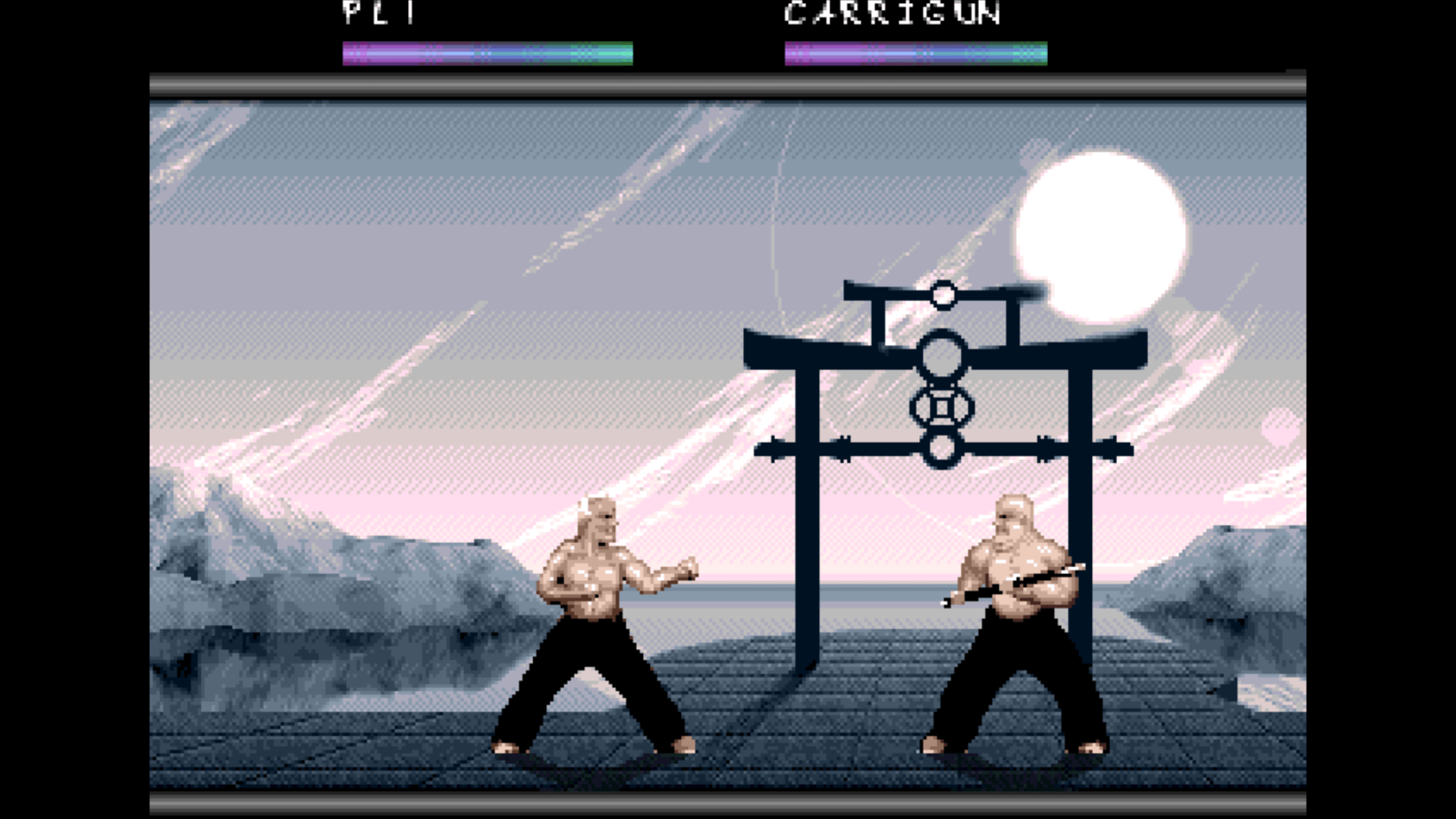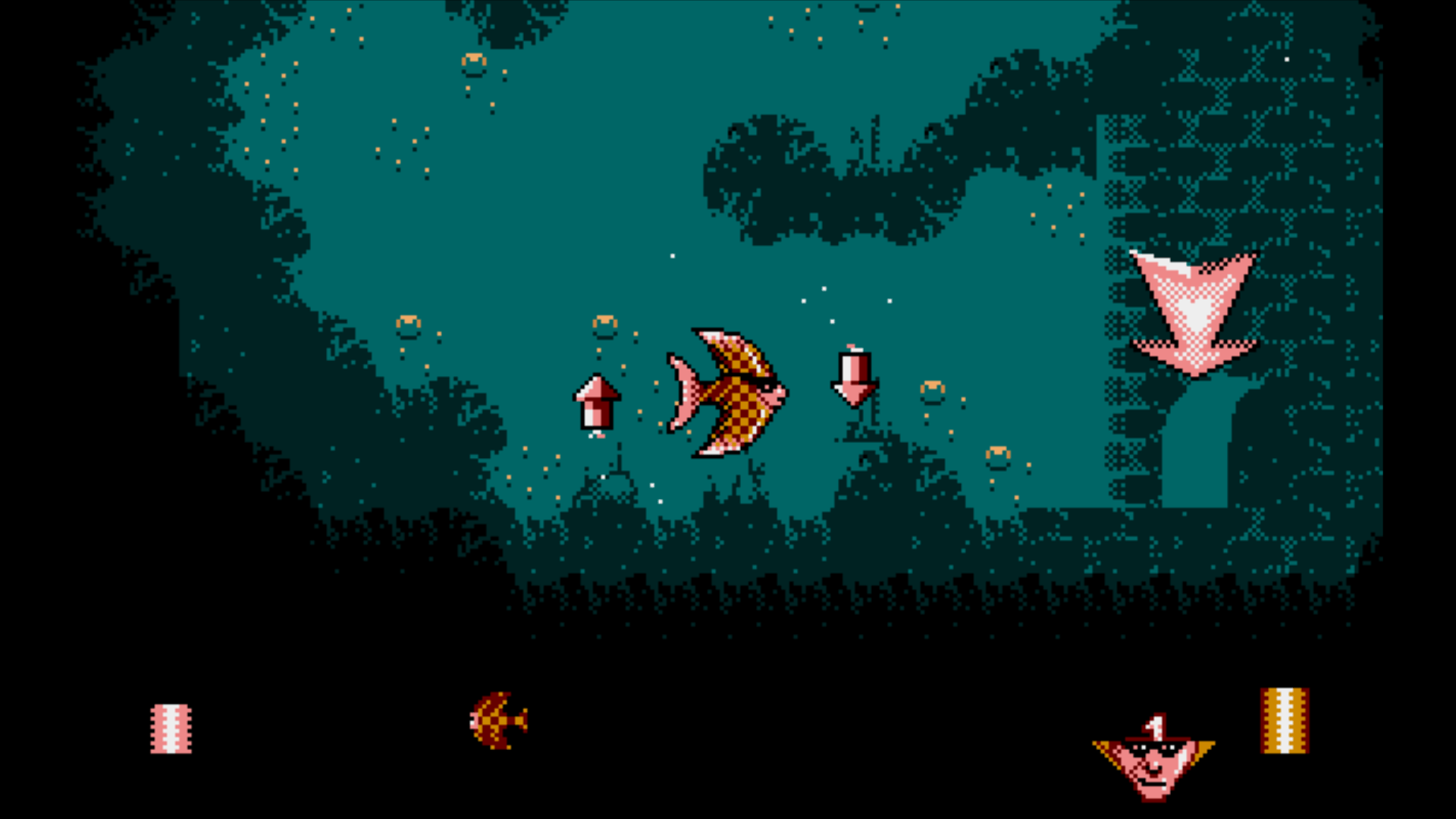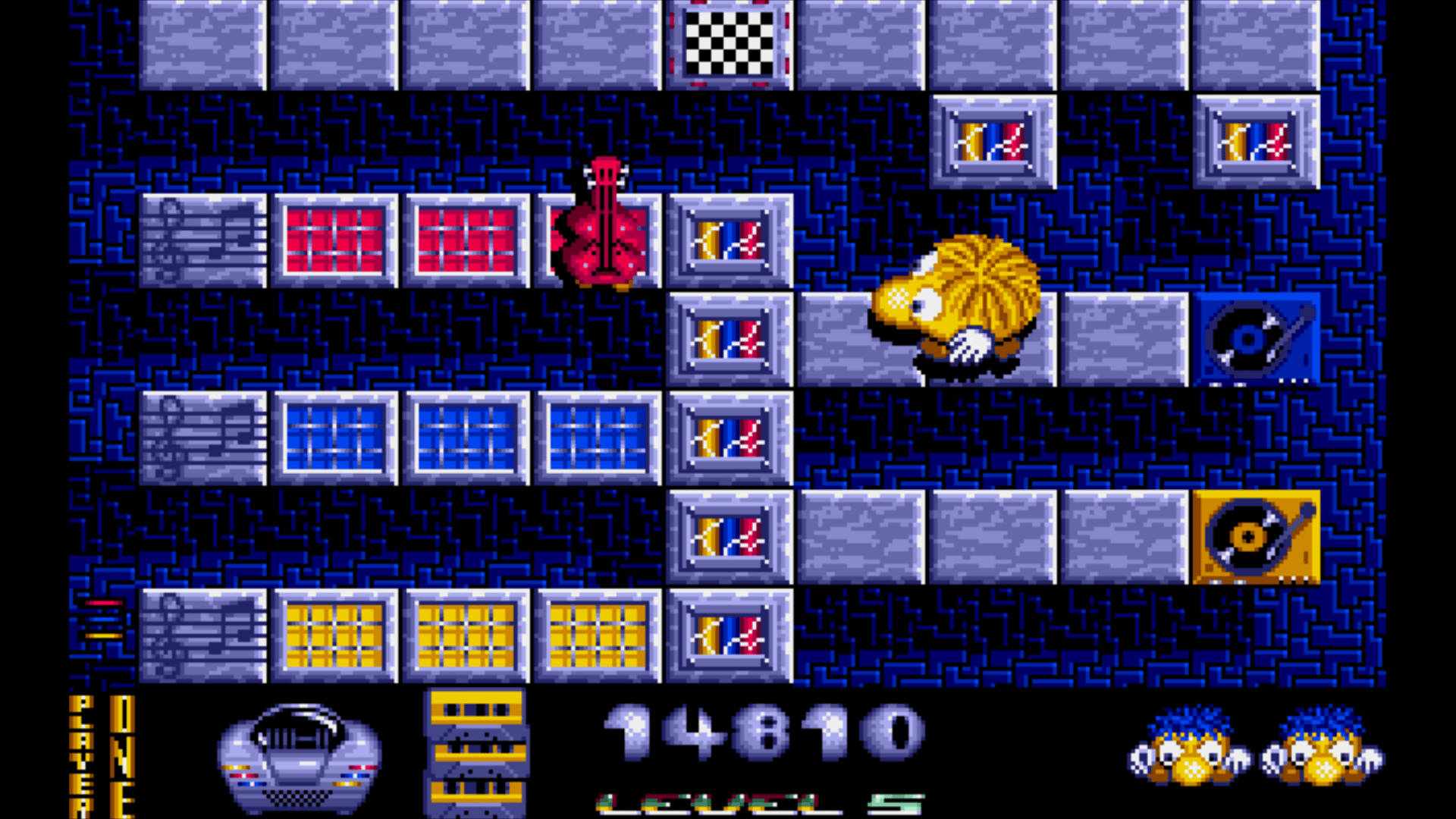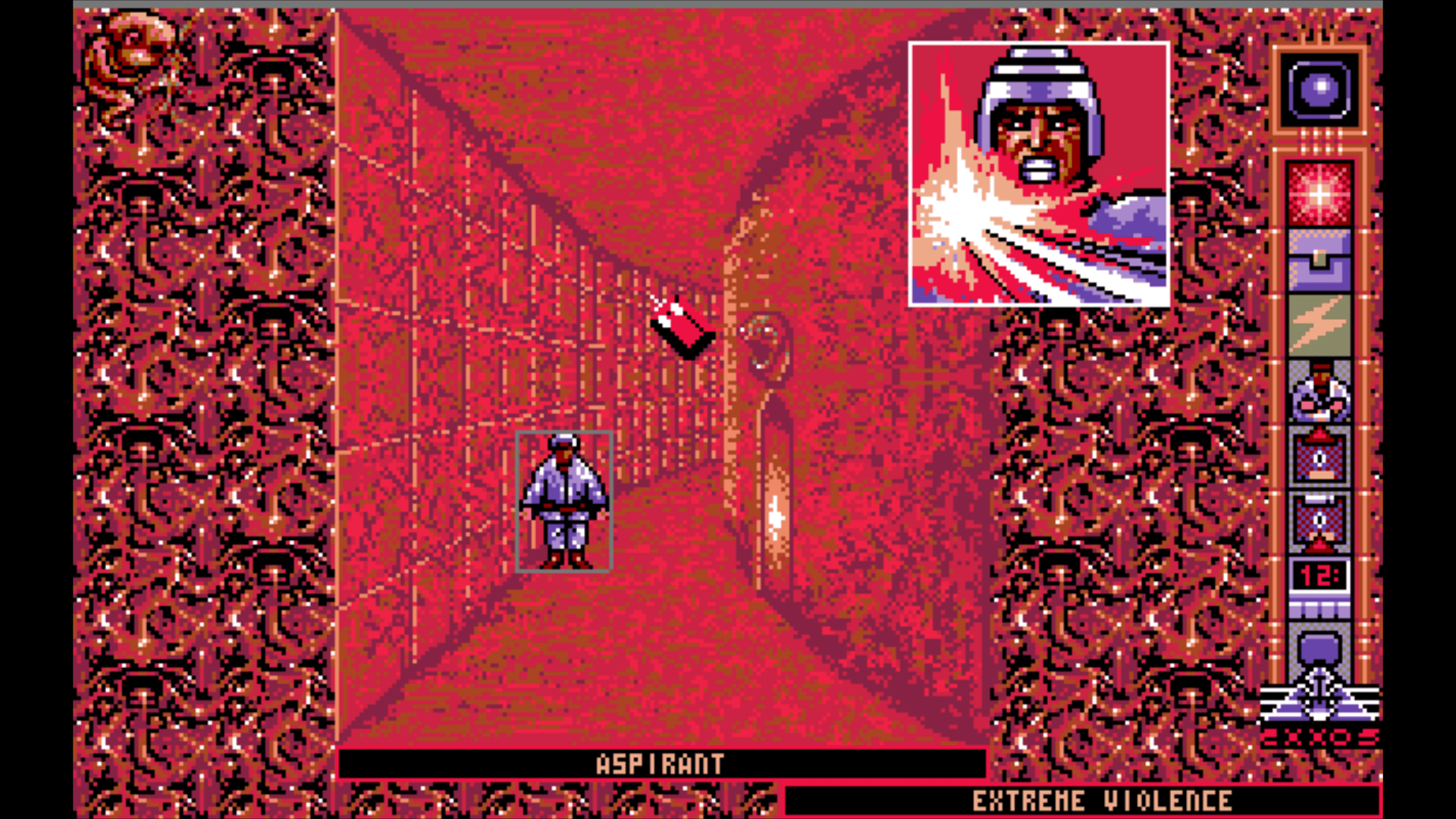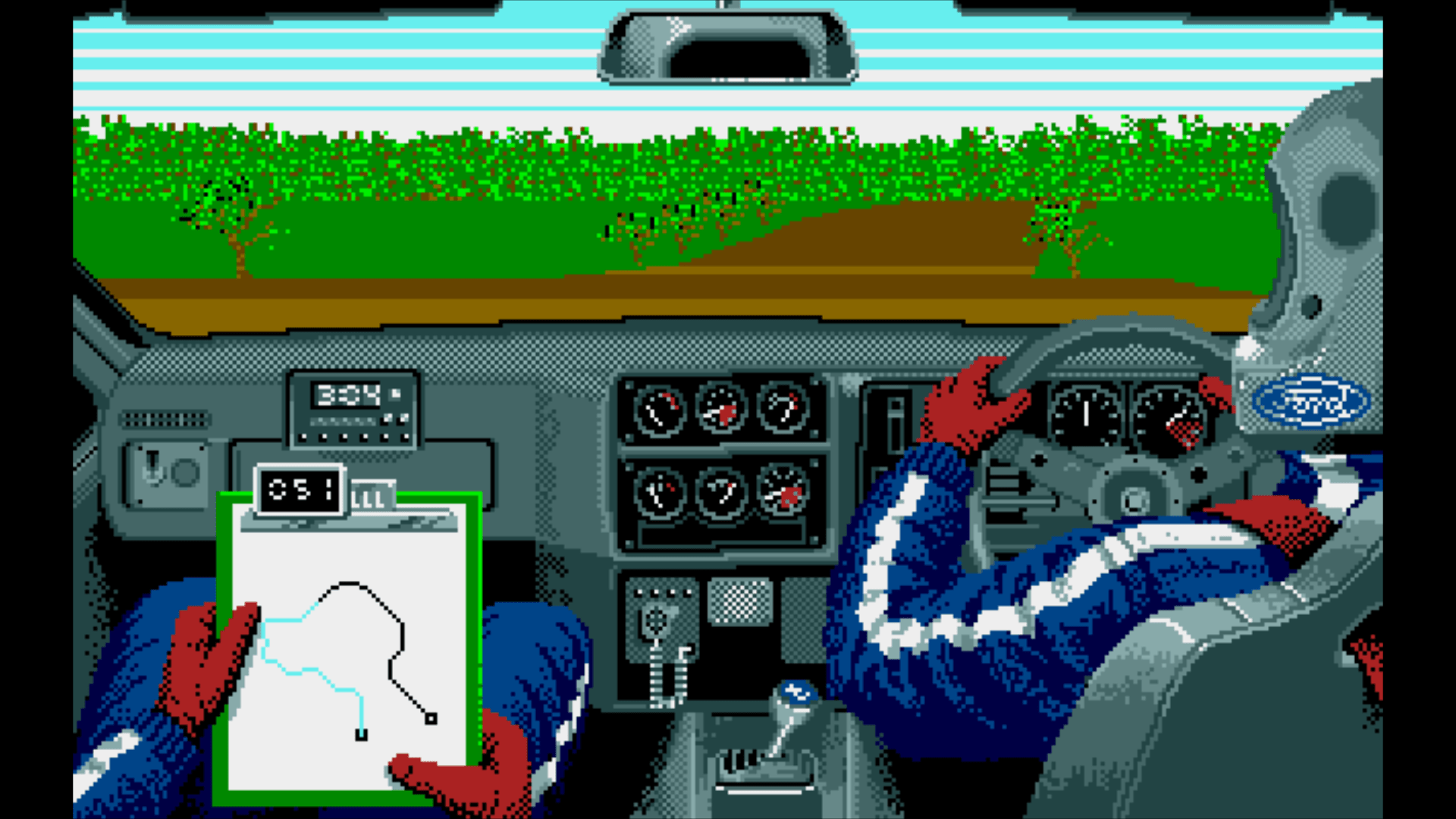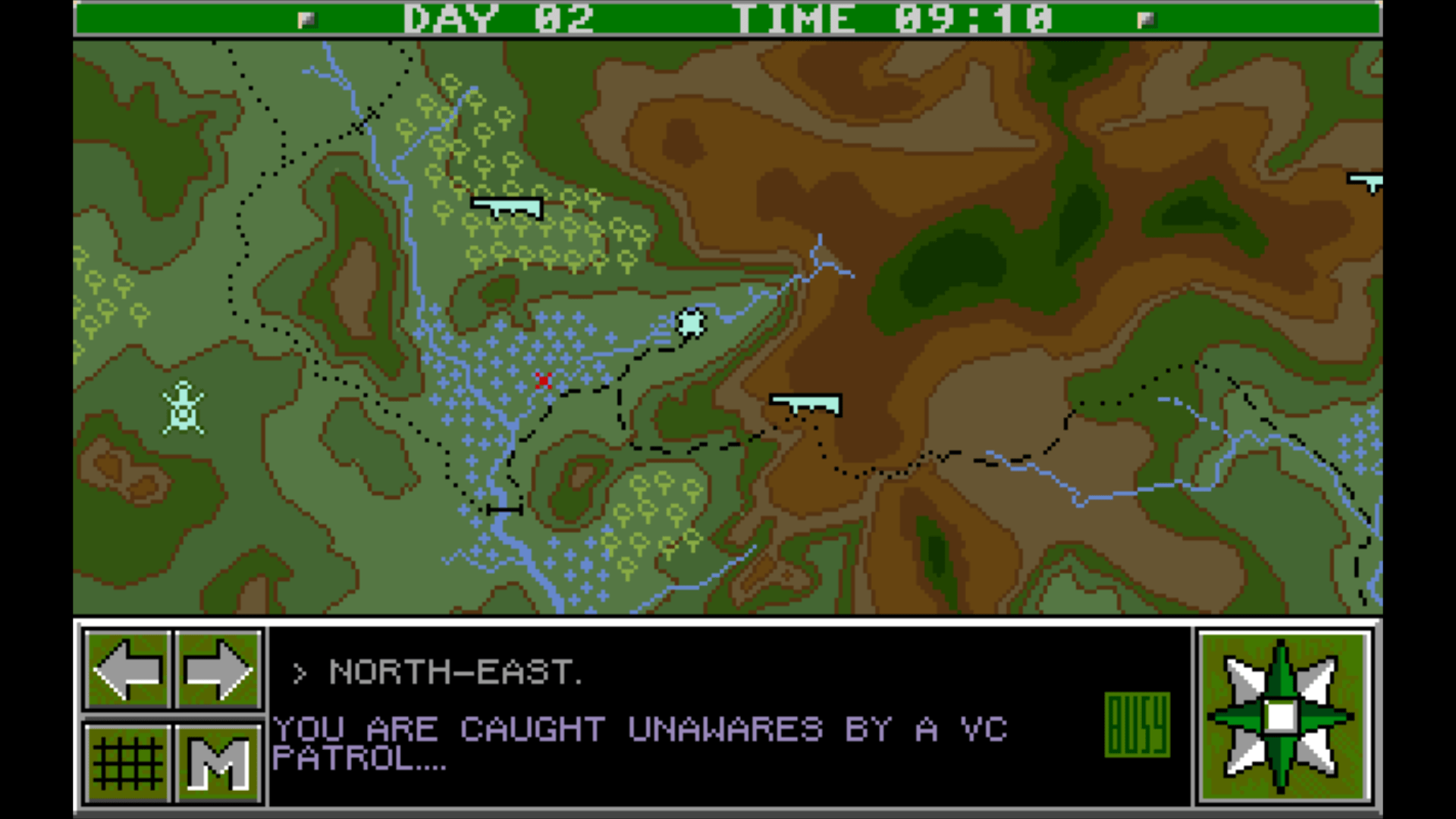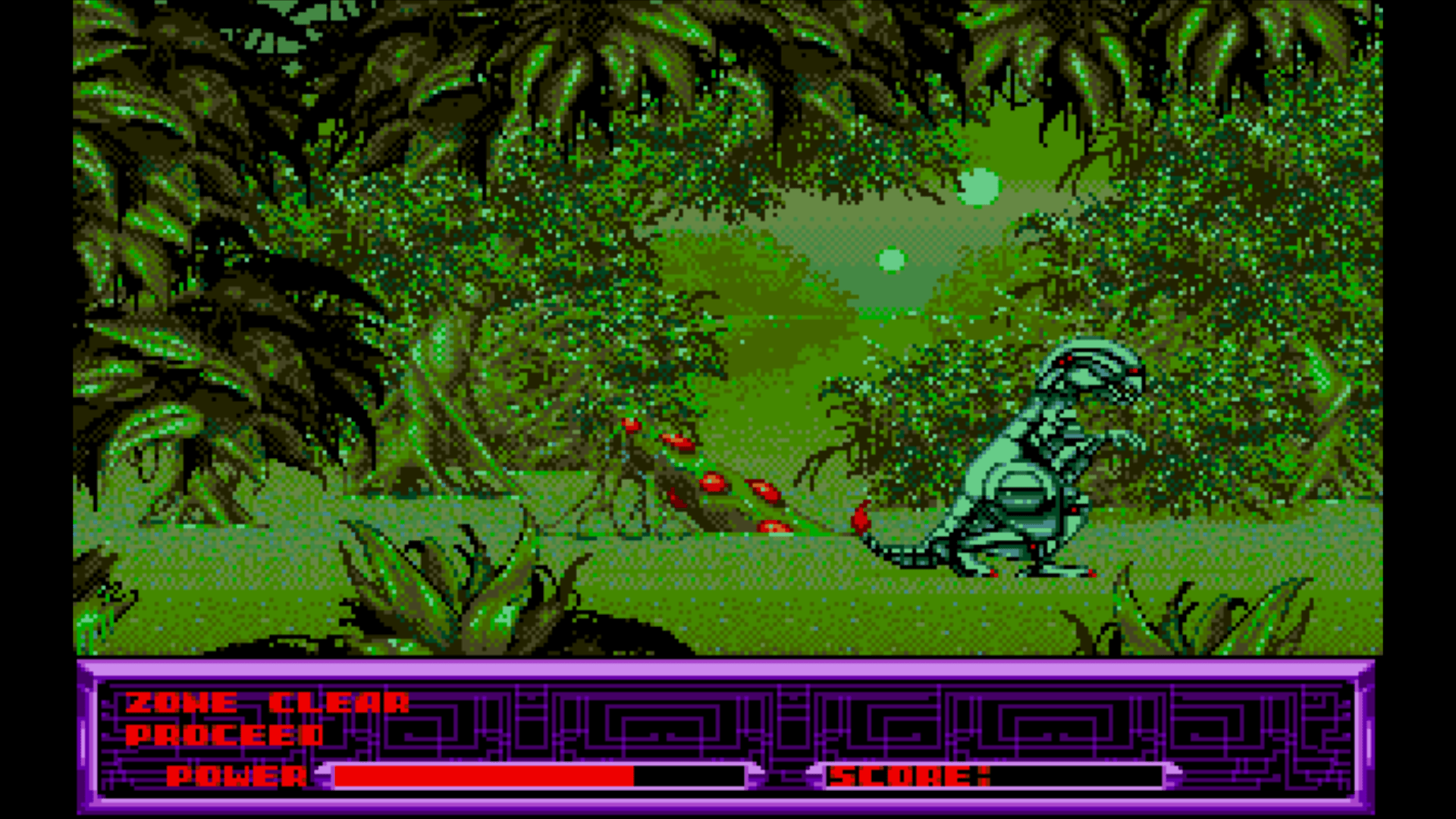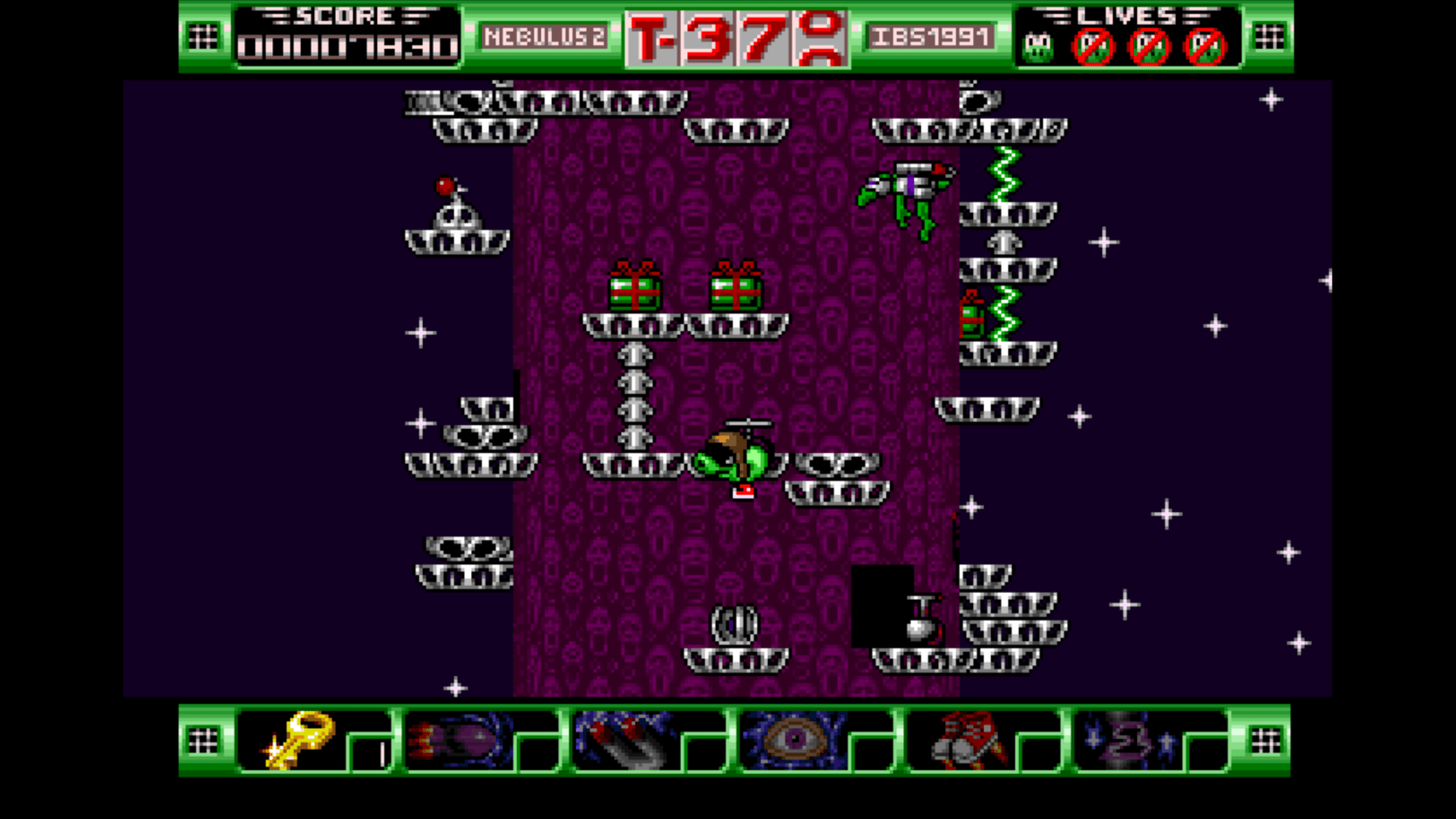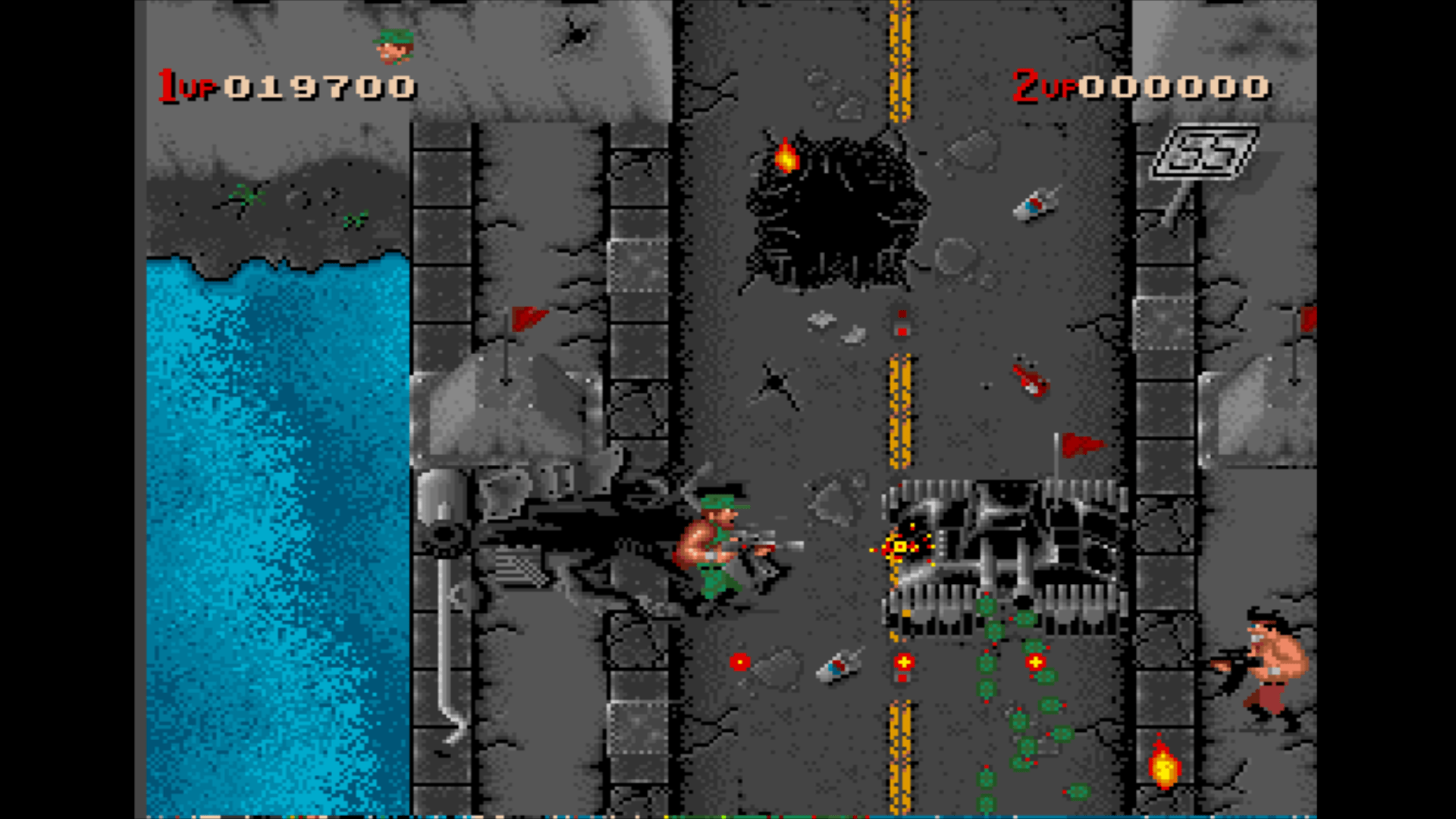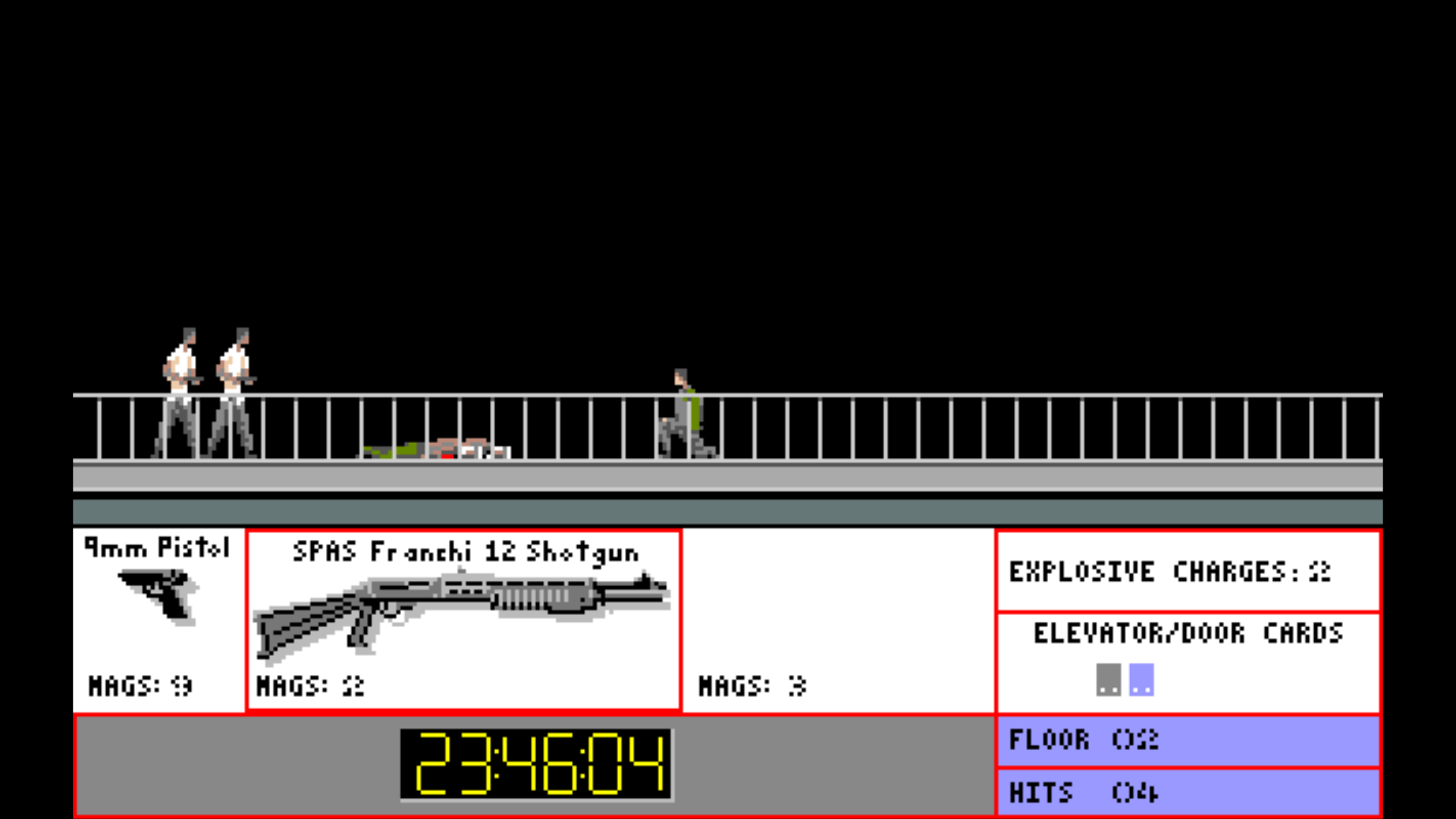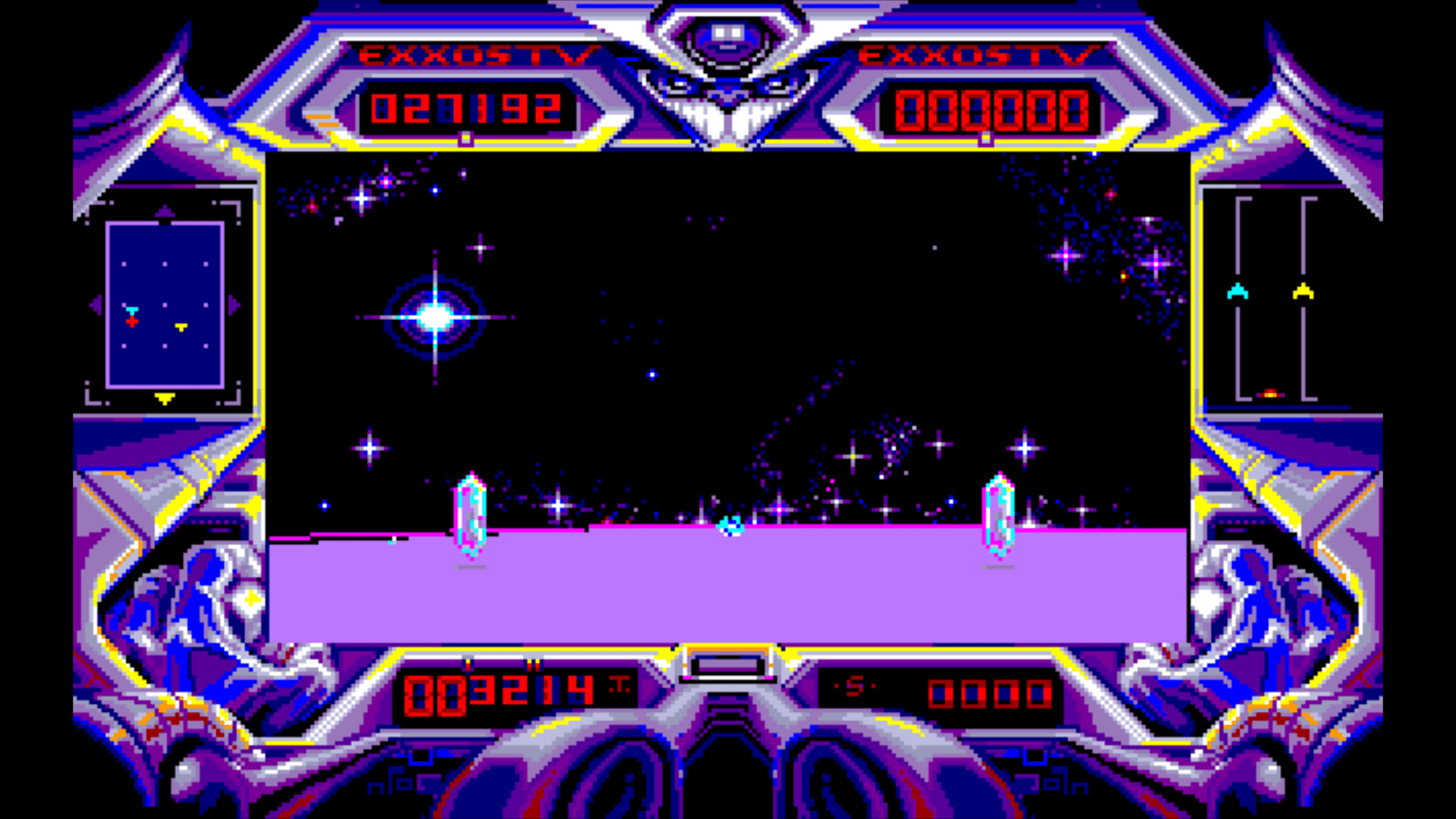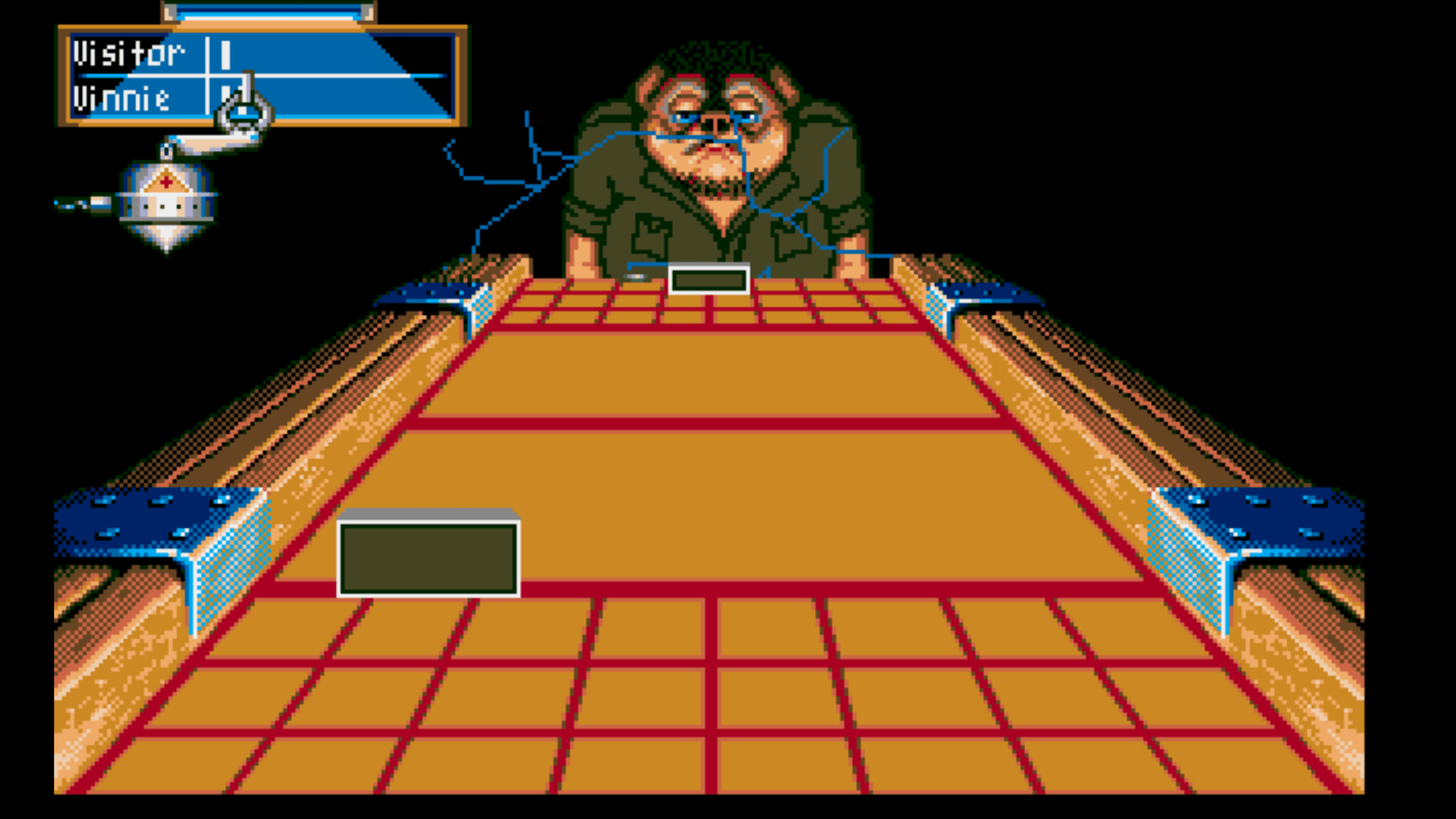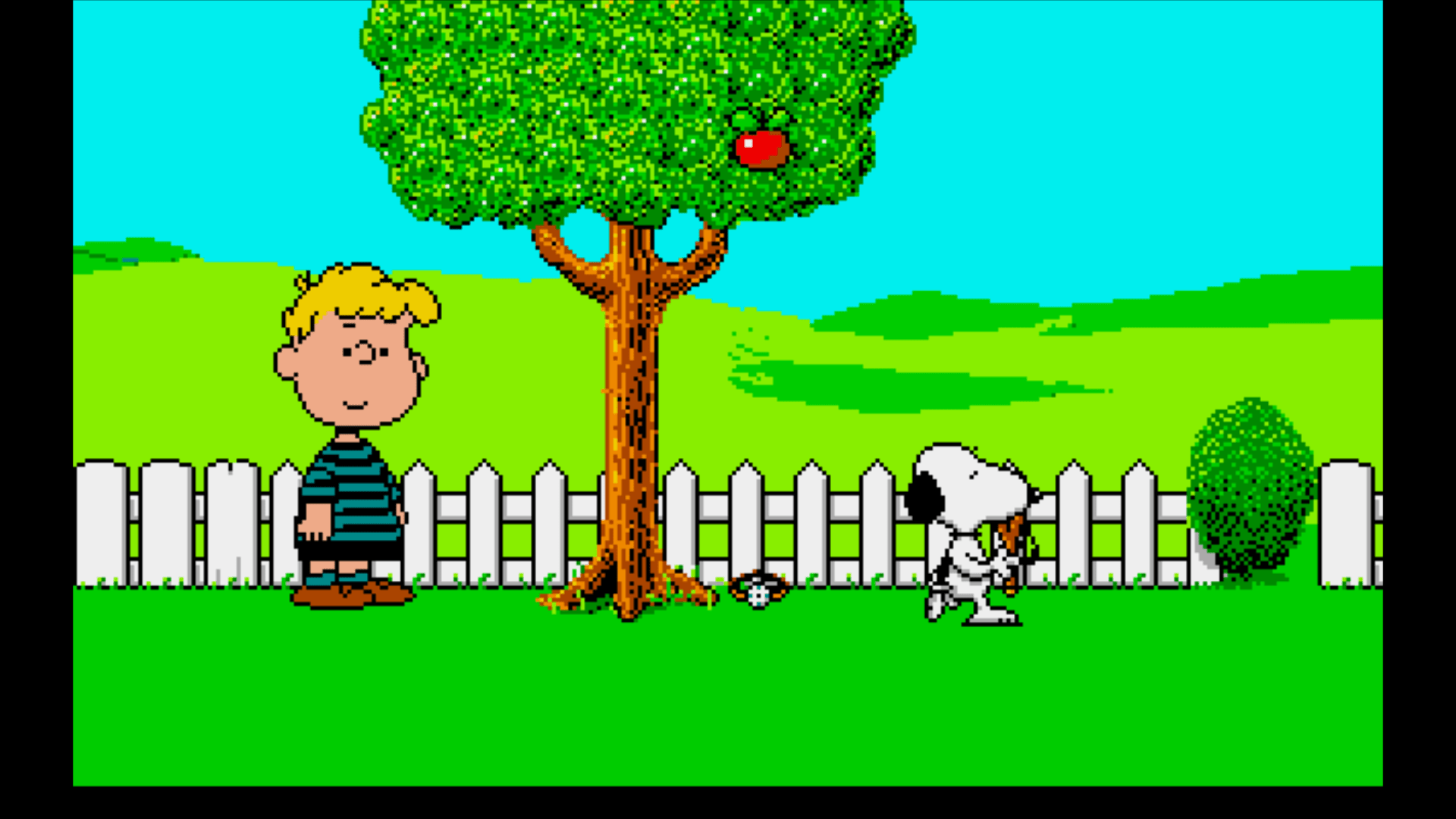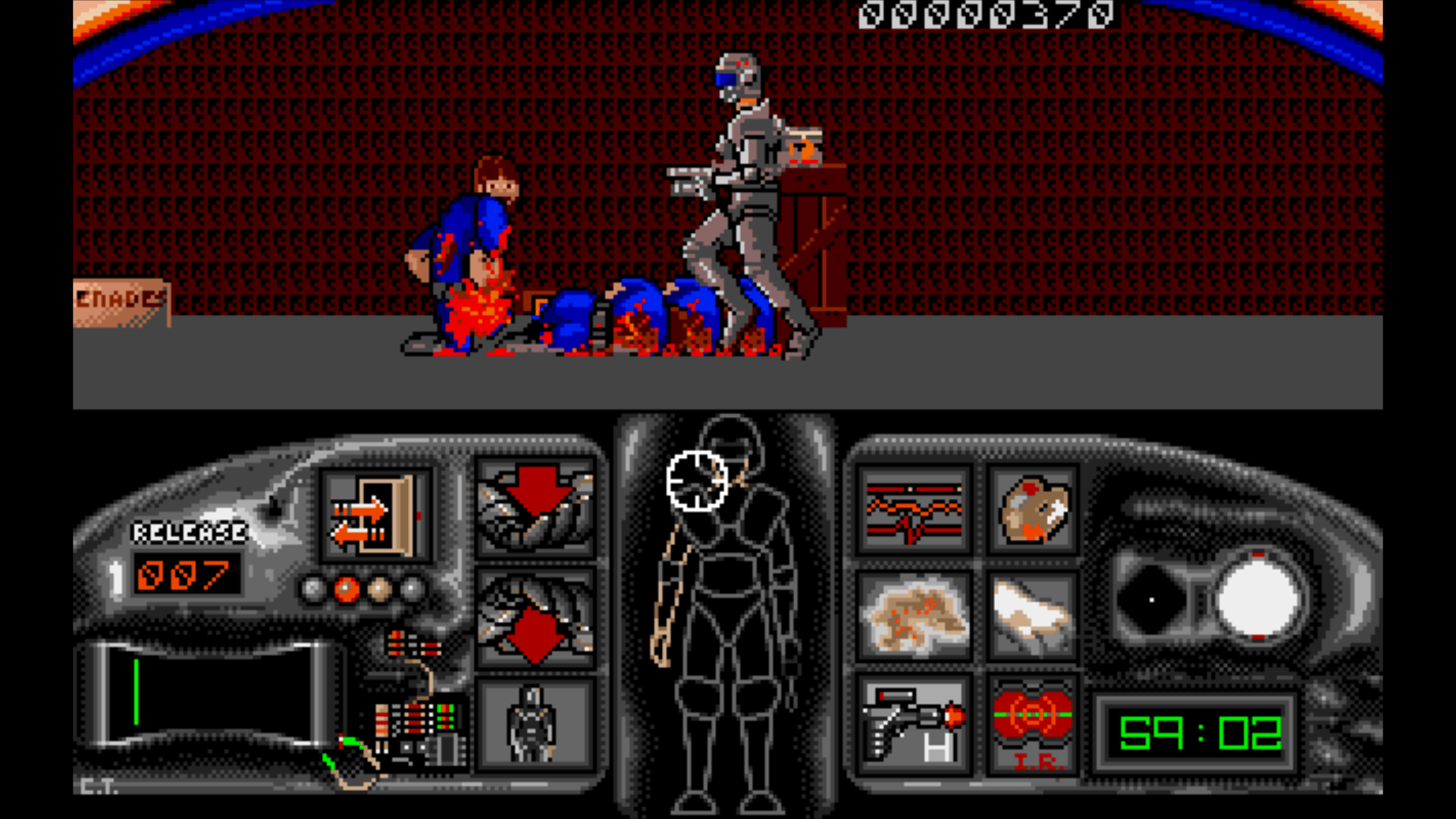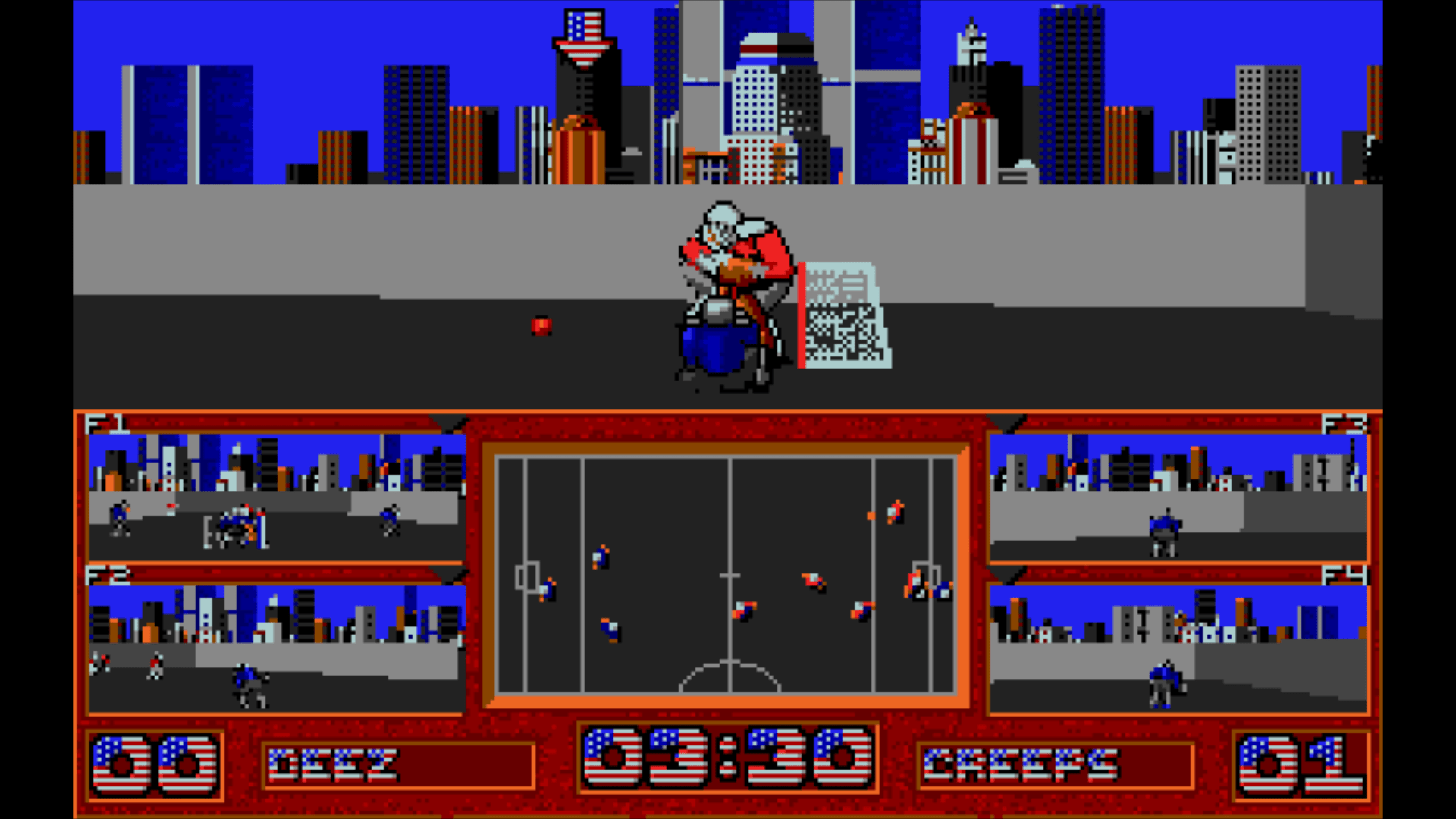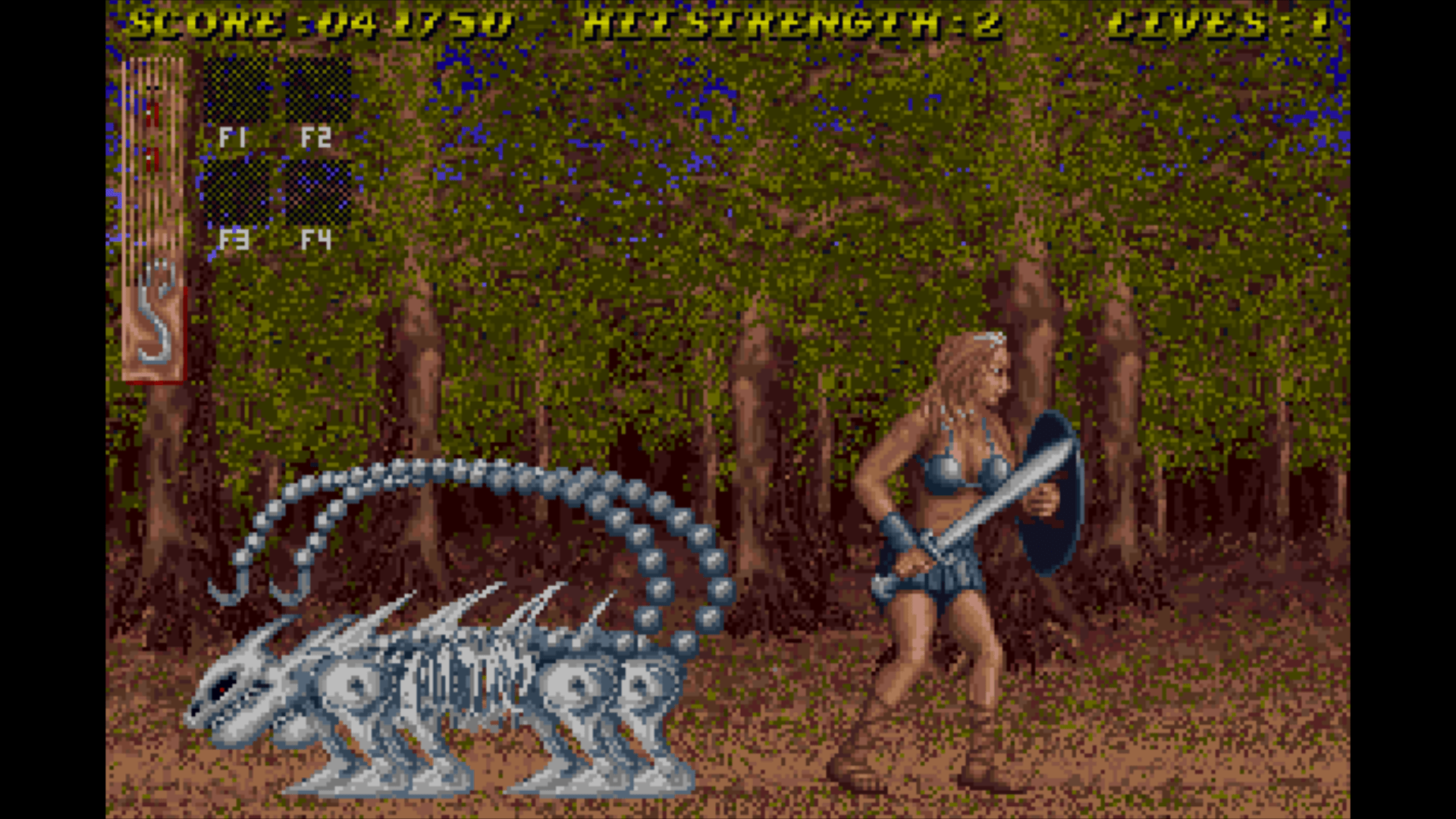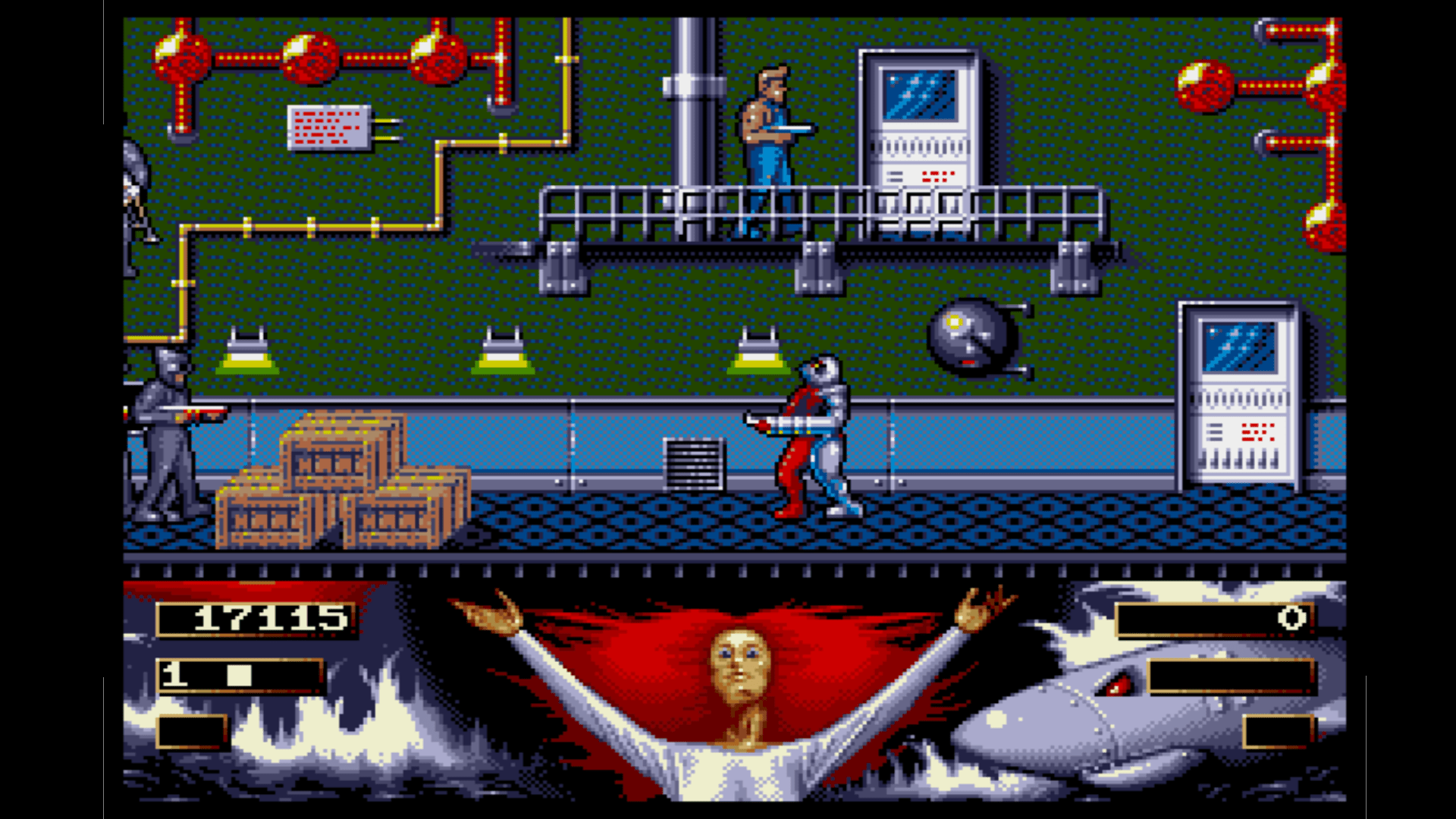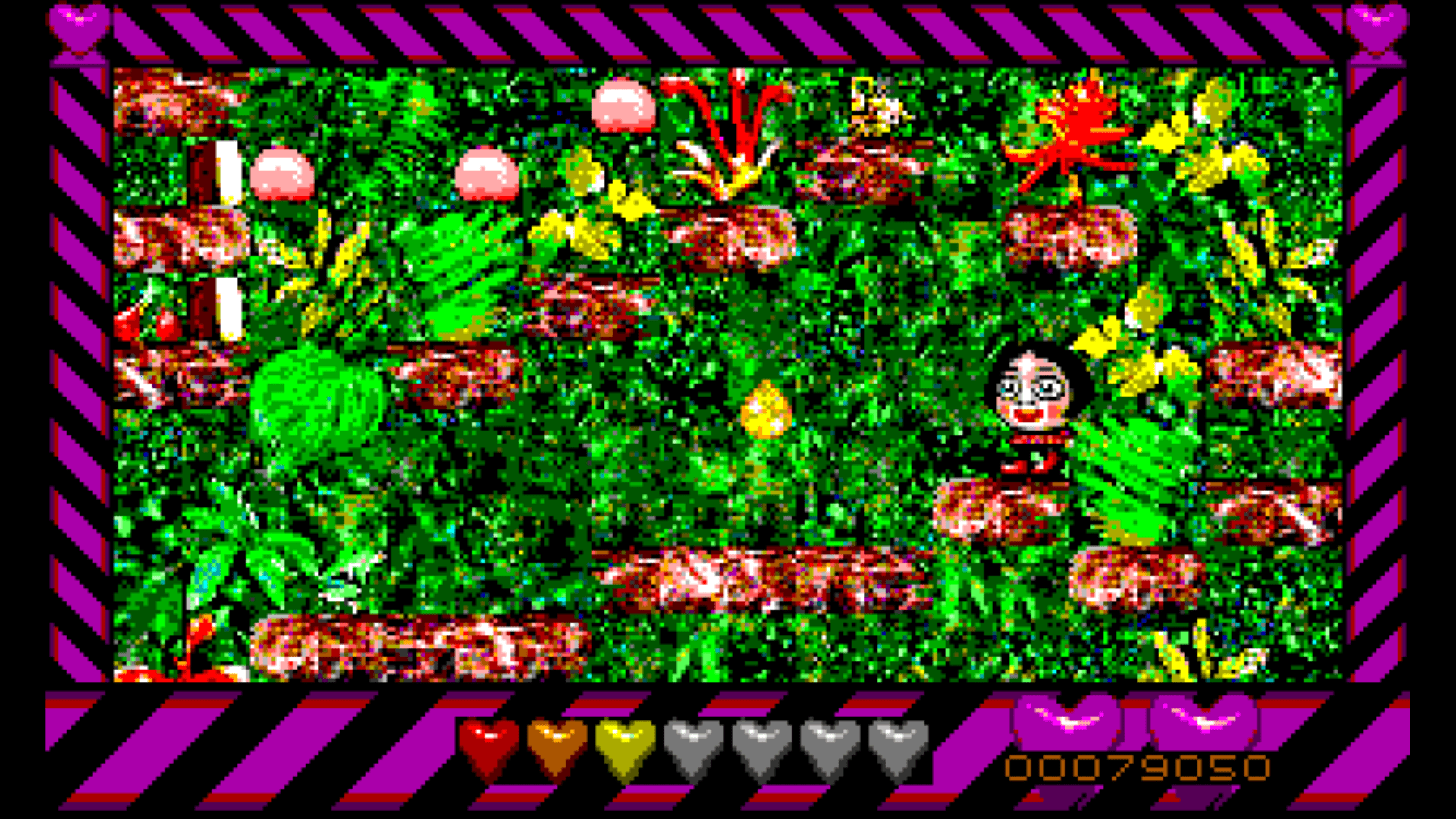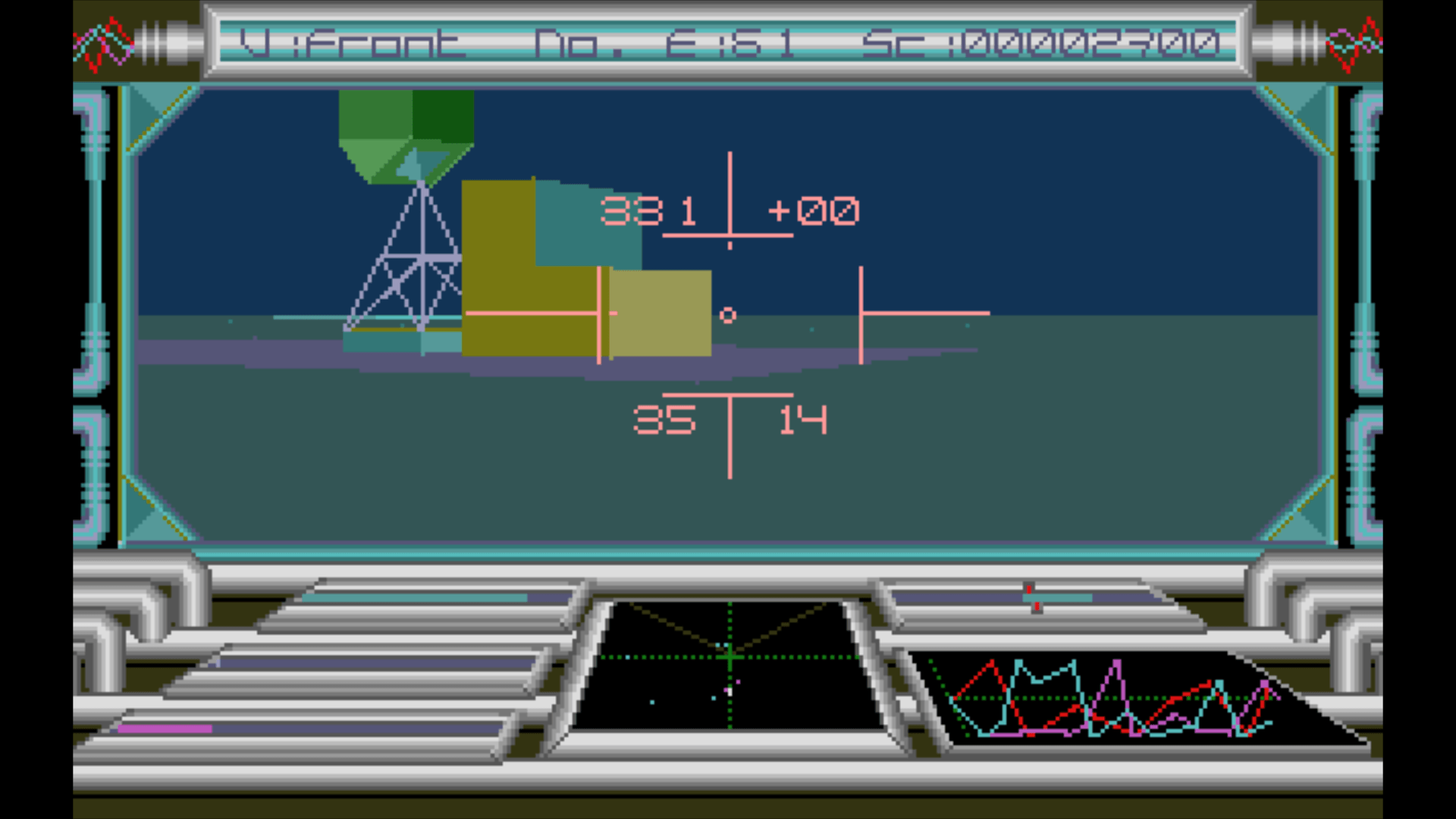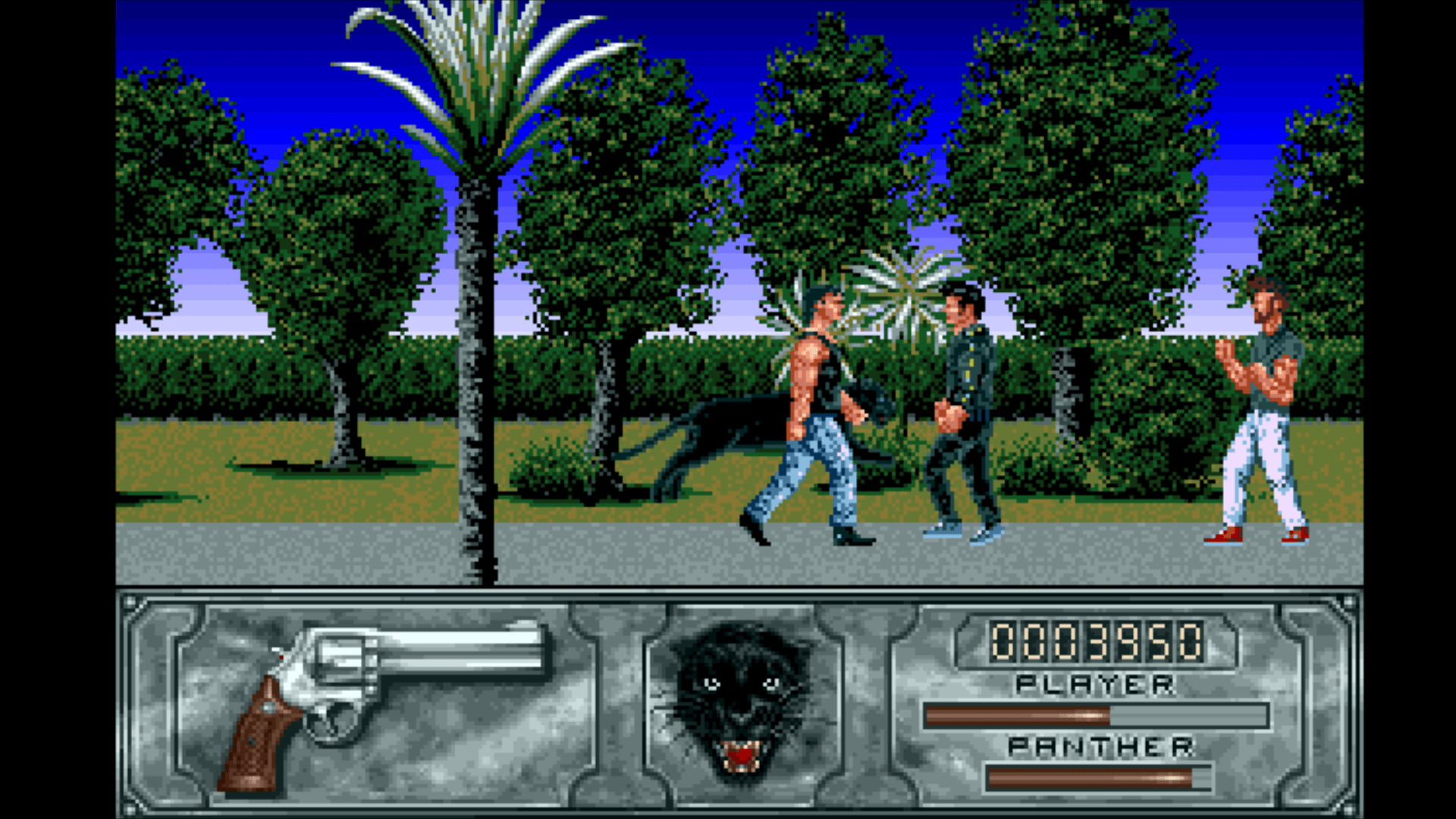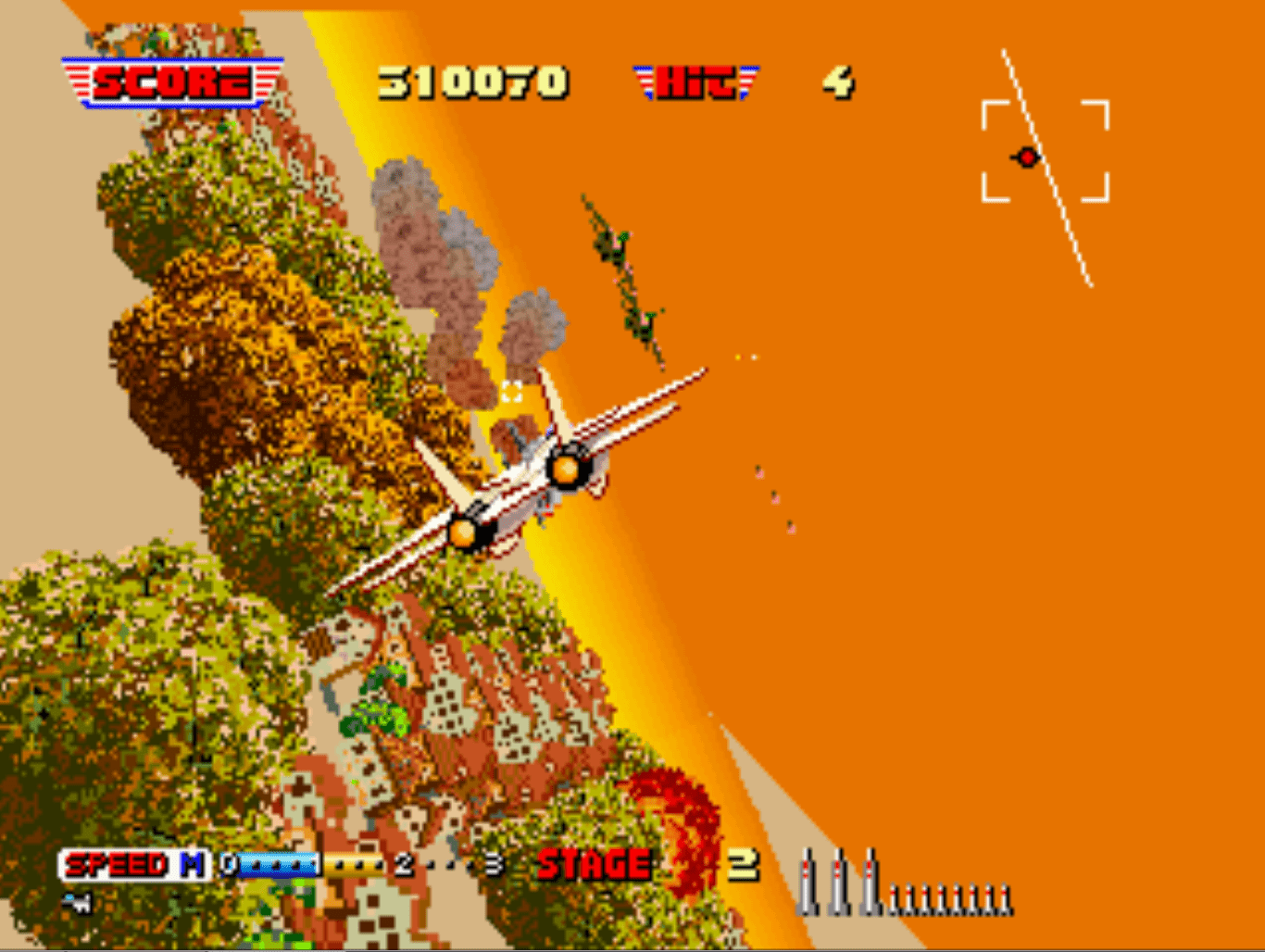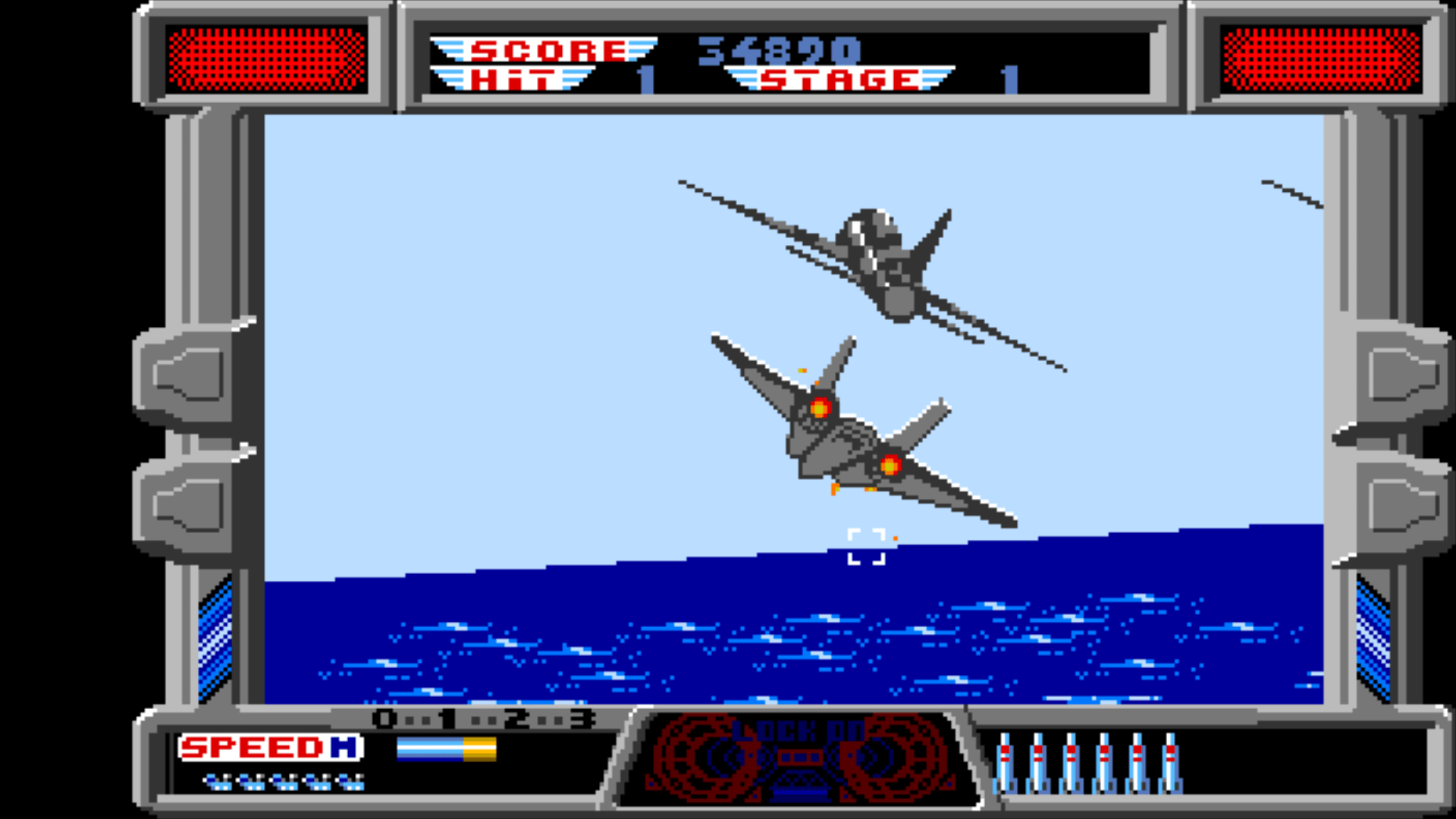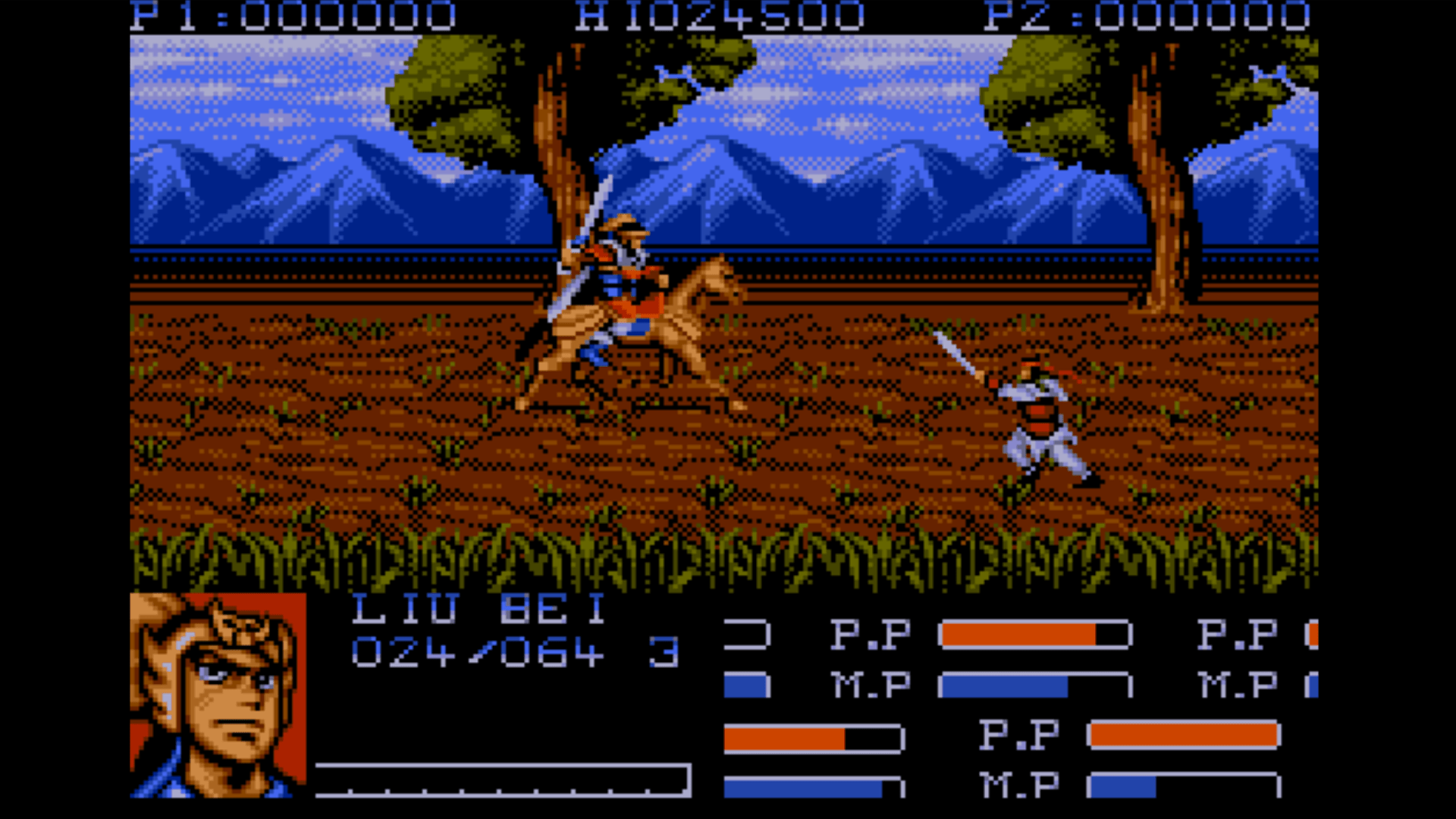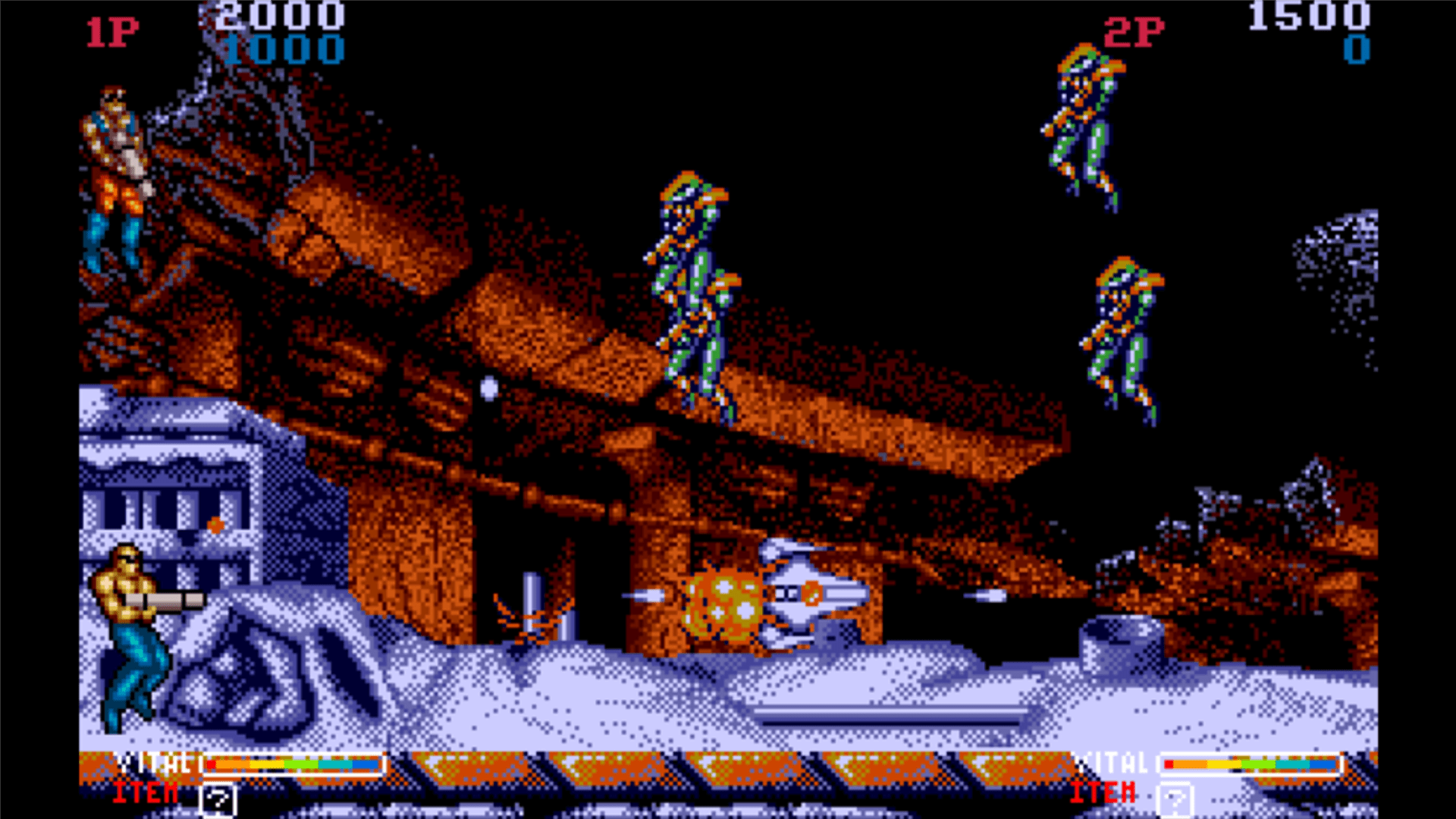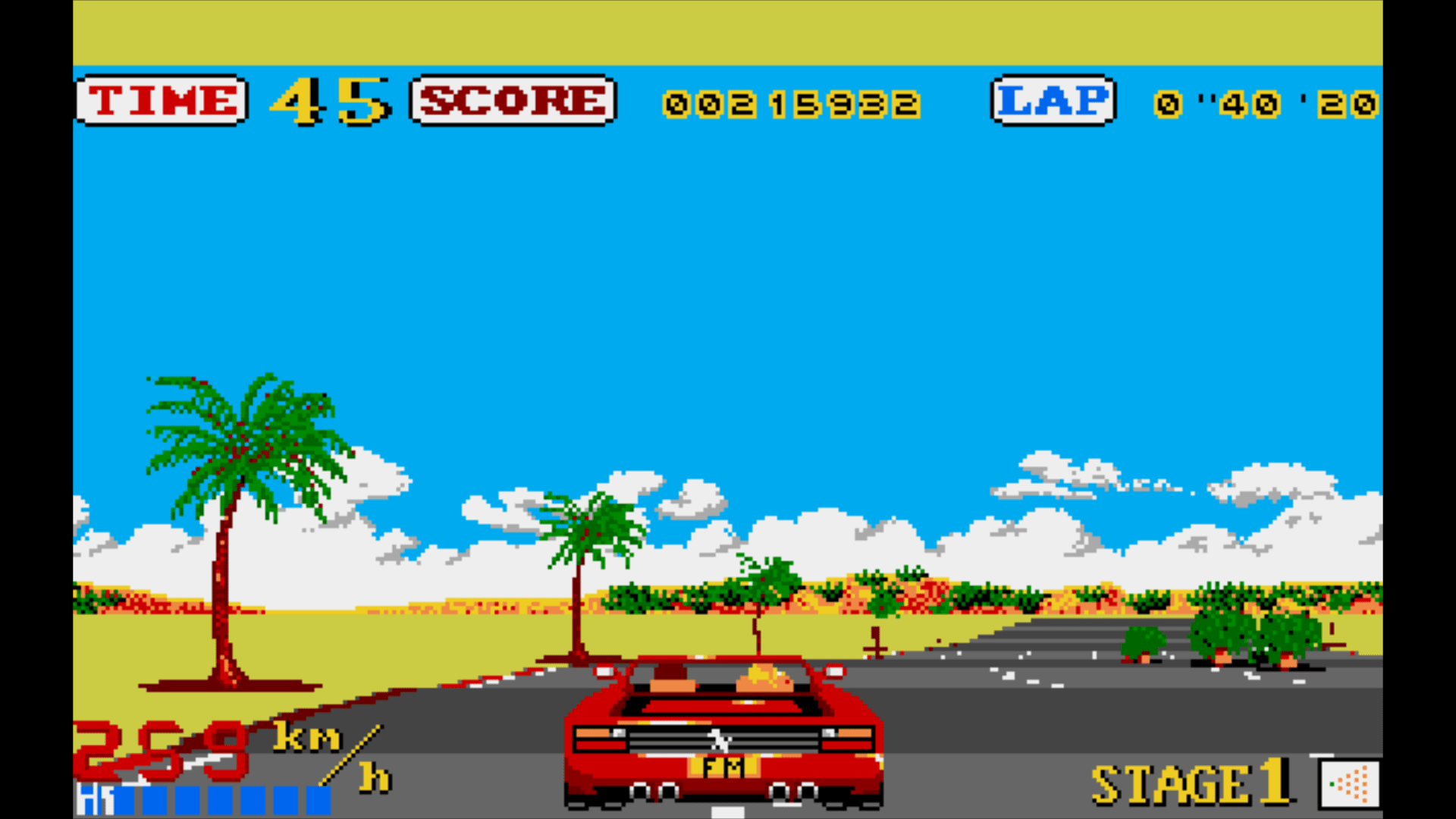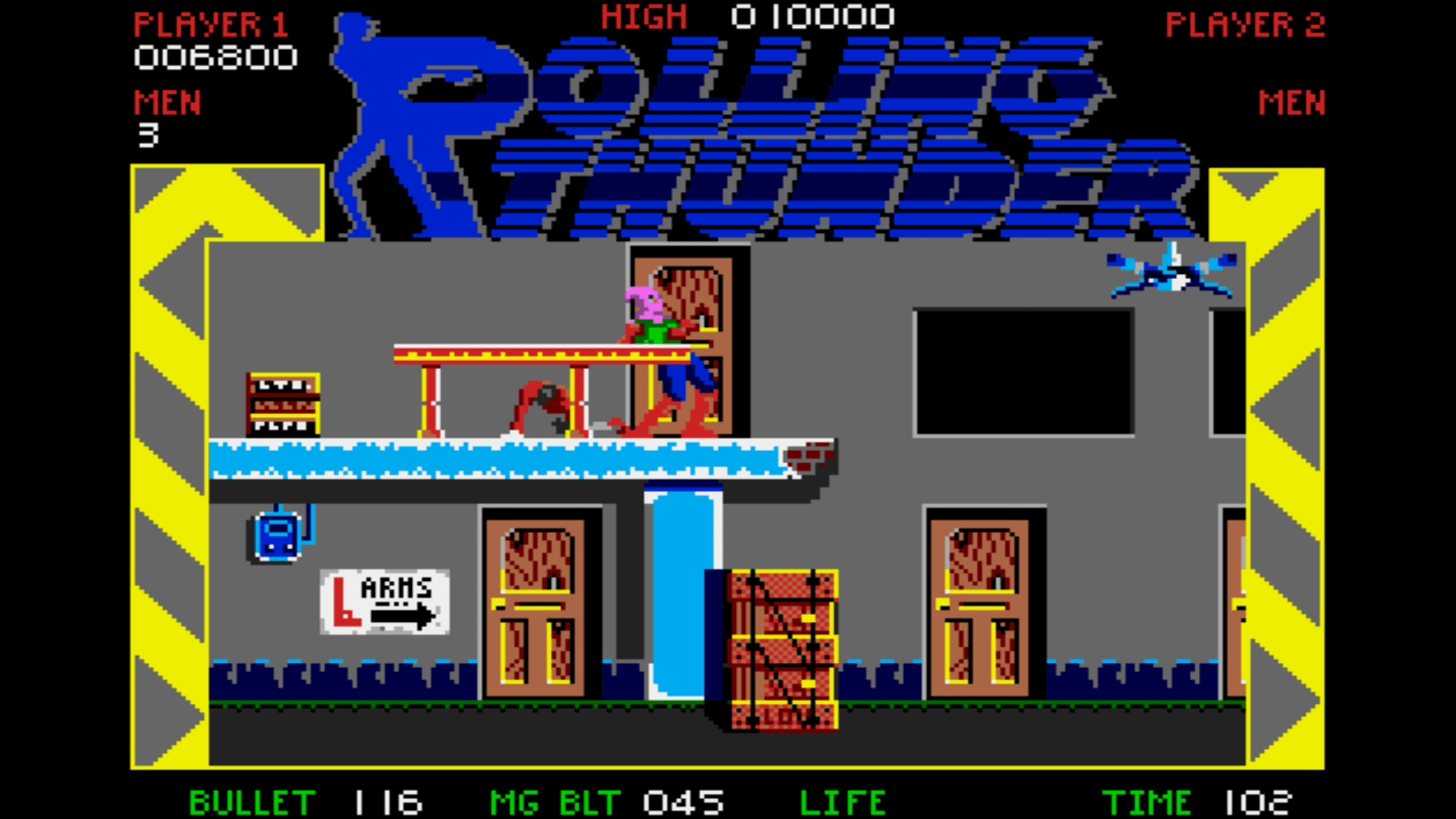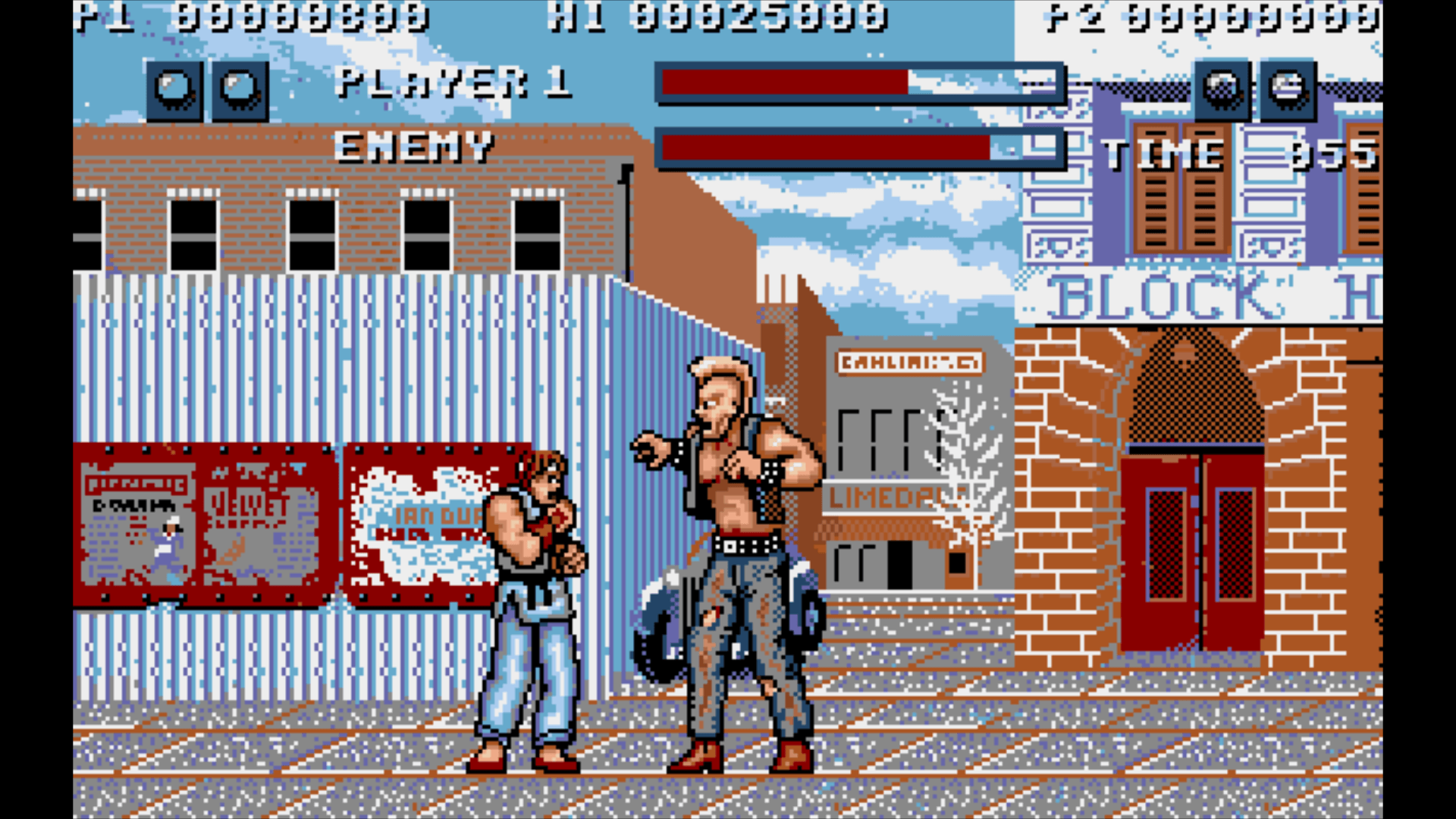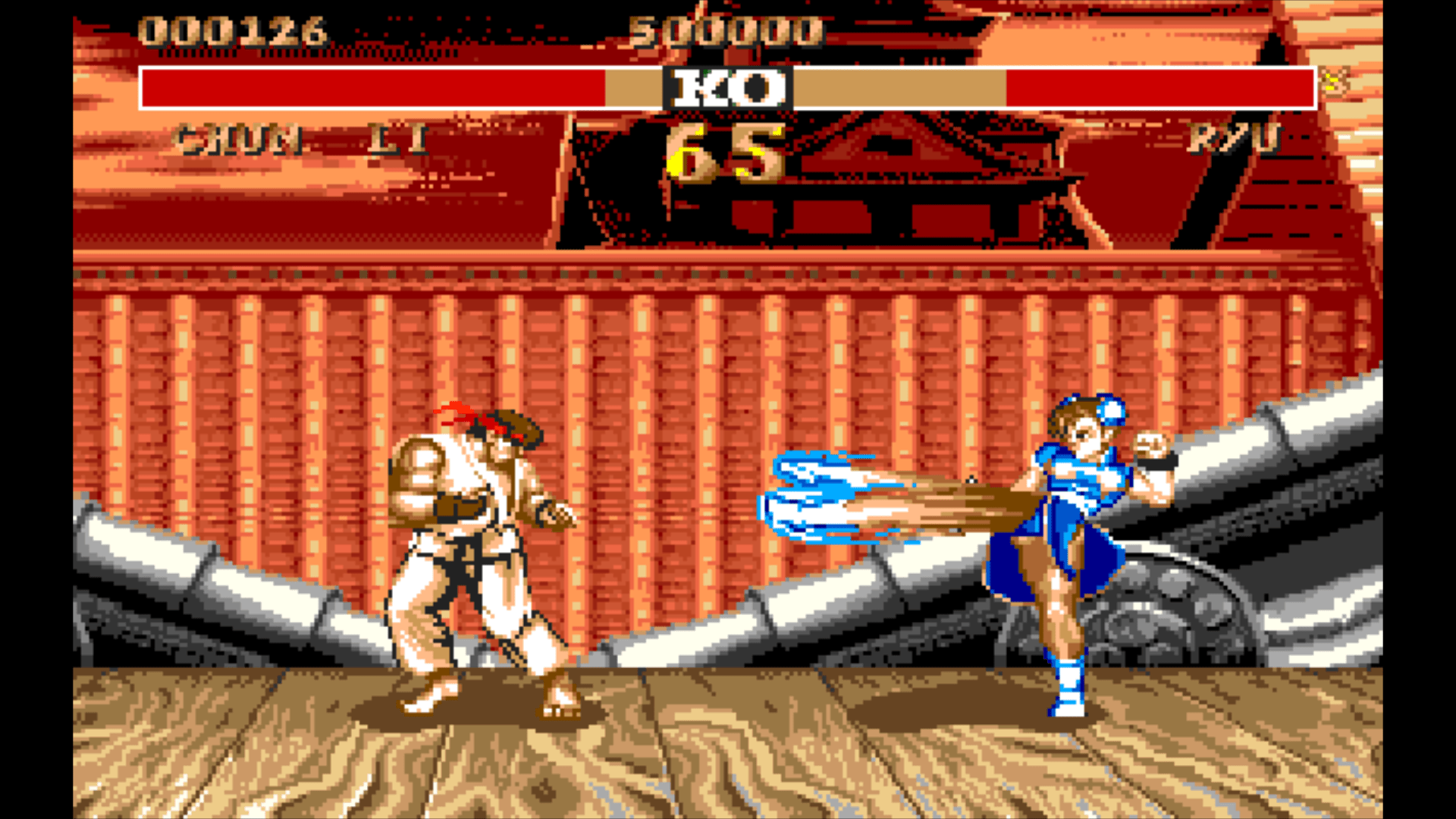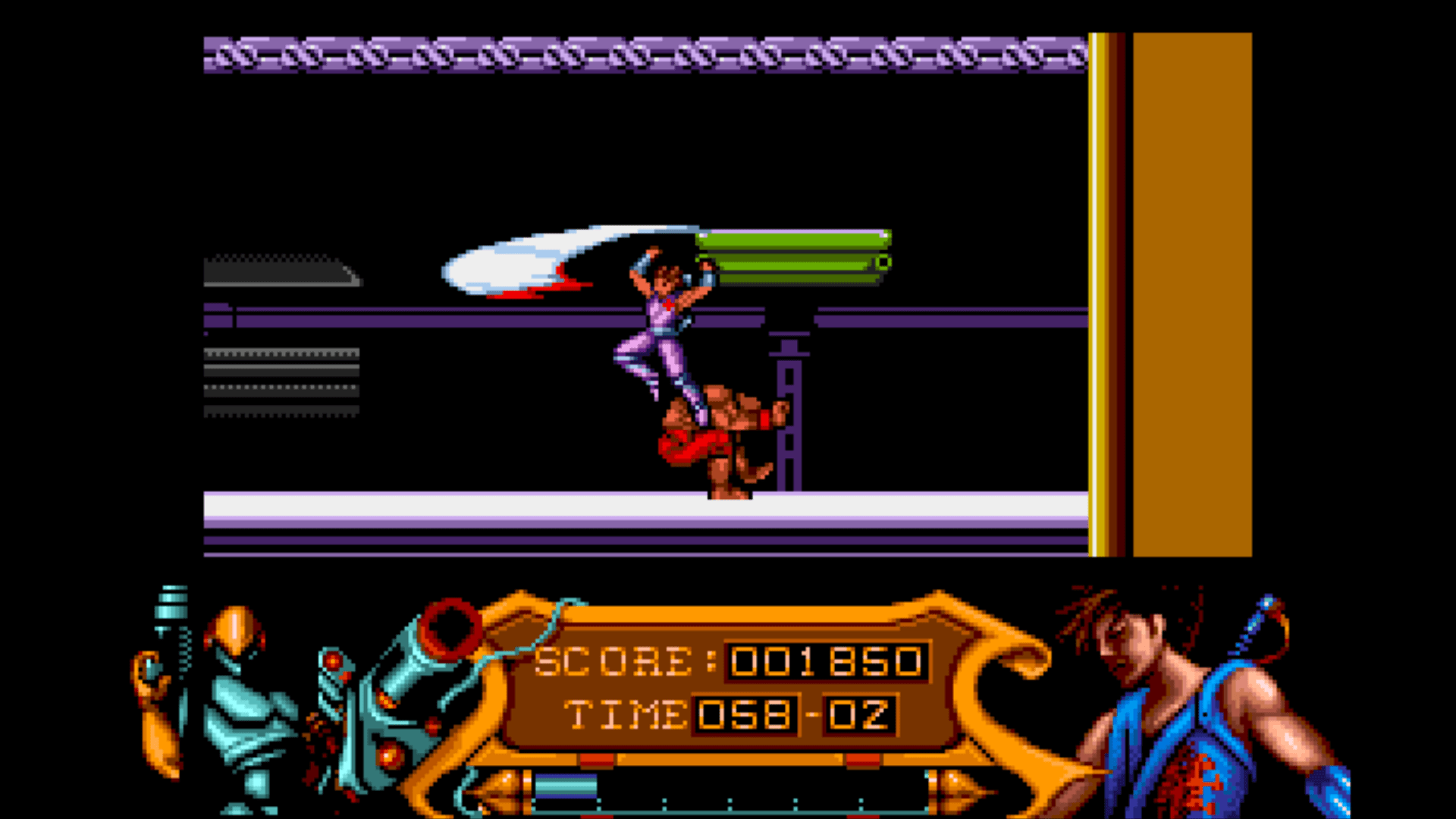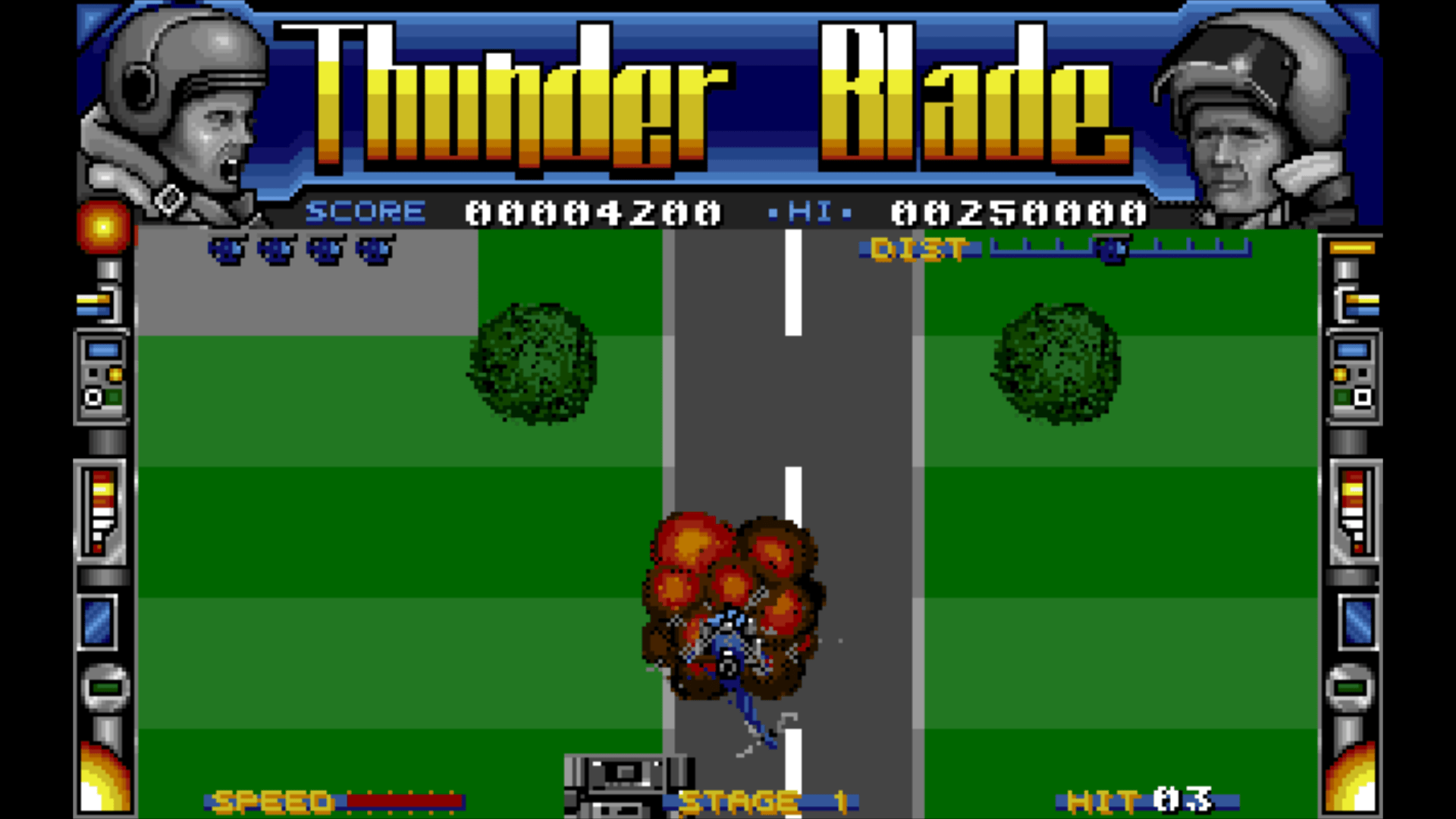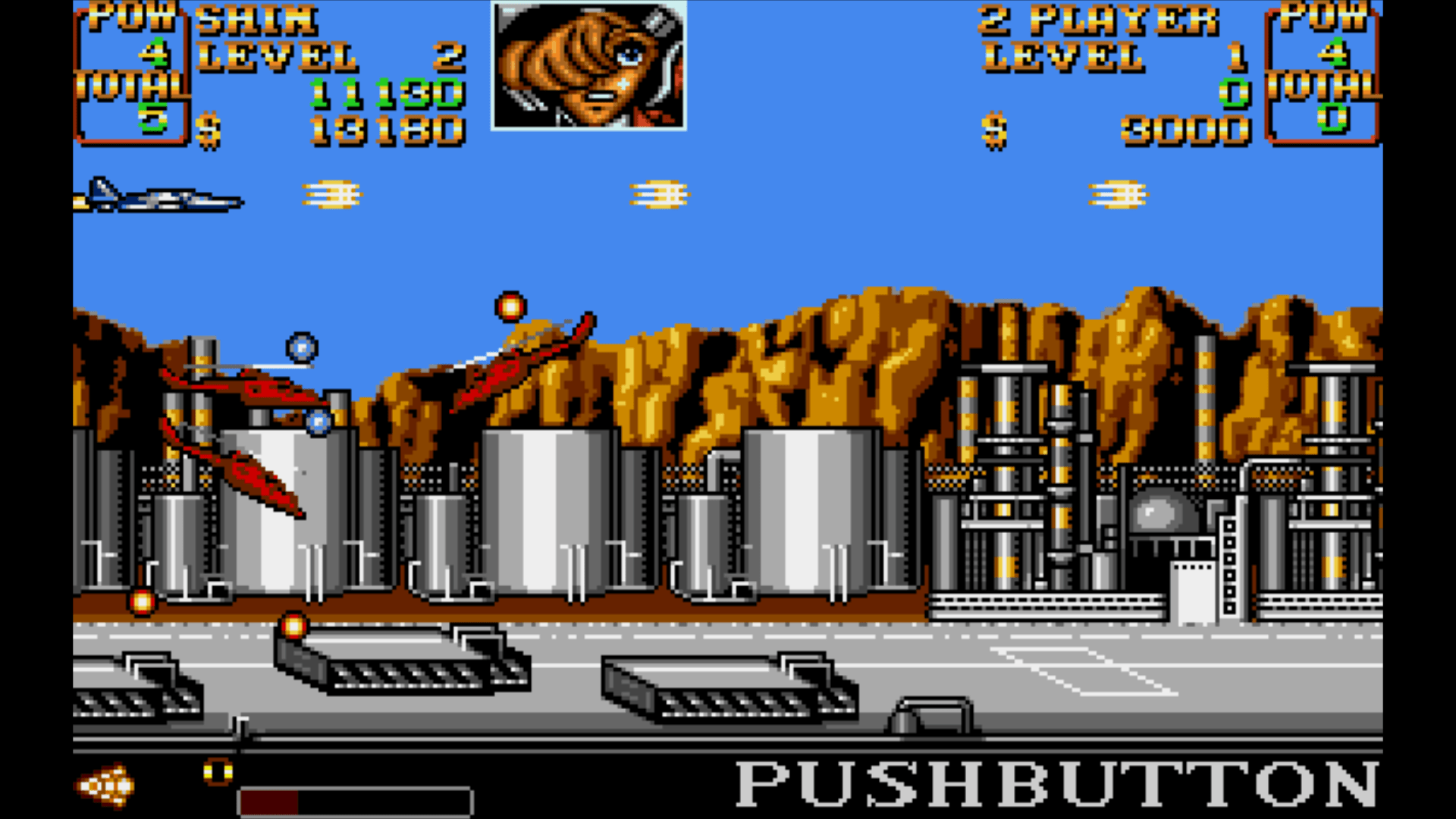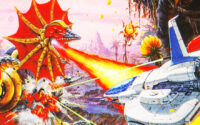Amiga Games – Part V: “Innocent Pleasures”
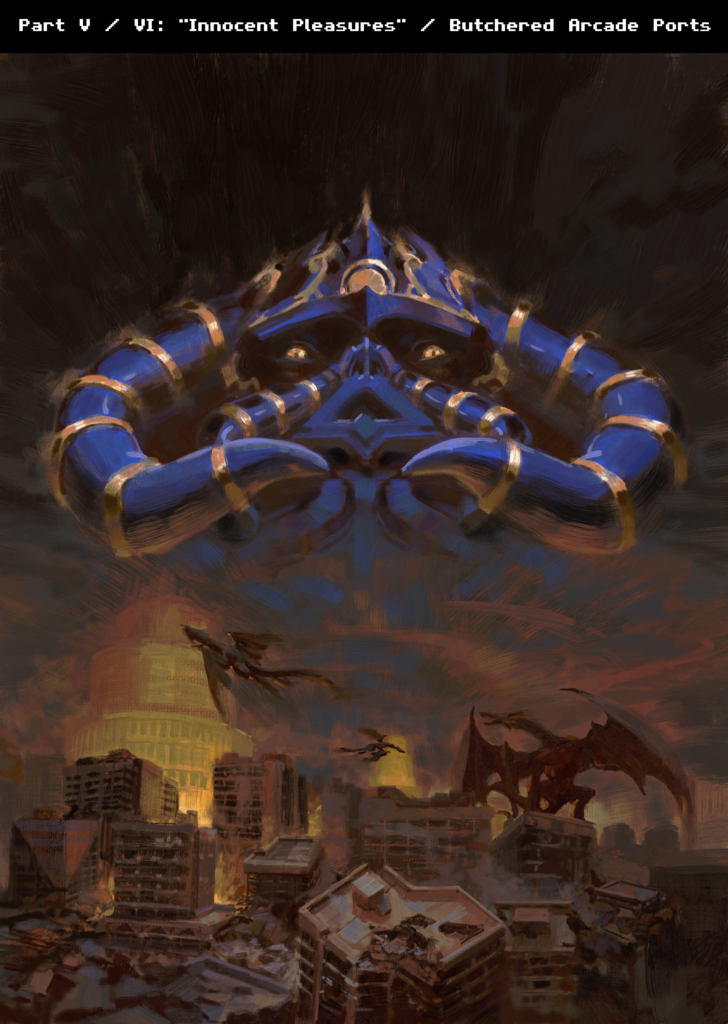
We all have a couple of those precious ones in the constantly bursting closet – The games that didn’t get the same love from magazines or other fans as they got from you and / or us. Because you might have even found an all-time favorite in the pile of titles that others trash… Or just simply refuse to see the profound and obvious beauty with… Okay, so that doesn’t happen every time. But it’s also a notion that possibly couldn’t get any more subjective. Thus, concluding this journey do exactly thirty of those…
1. Astaroth: The Angel Of Death (Hewson Consultants, 1989)
One might wonder if Astaroth herself had something to do with this game. It’s almost demonic in its difficulty, it has reportedly 256 flip-screens, and I don’t think I have ever seen the Amiga’s color-palette been used in this manner. But regardless, I’m always drawn back to it for no doubt meta-physical reasons. It might also be Jochen Hippel’s fantastic soundtrack. Or the strangely fascinating design. It might also be that Astaroth reminds of Old School arcade adventures, except it’s on the “80s Next Gen”-machine… You control Ozymandias who’s ass deep in the Death Angel’s labyrinthine lair. Which means that there is no rest ever. Everything that moves (Bats, skulls, etc.) hurts and rots your brain. You’re a pretty defenseless Mofo at the beginning, but you can find nine different psychic powers ranging from levitating to shape-shifting. And since you can forget about defeating Astaroth with your weak fists, the final showdown has to be a battle of the minds. Eldritch The Cat, who developed the game, got everything right from the surprise elements to the tiniest details on screen. The game really looks unique and reminds of nothing that’s on the Amiga. It also has this weirdly “intangible” presence…?
2. Bio Challenge (Delphine Software, 1989)
In the future, humans are becoming weaker and weaker with every generation. Soon, they will be too frail to survive. The solution is to transplant a human brain into a robot known as K.L.I.P.T. Maybe that one will survive in this oddly charming action game that certainly does things outside the box. Most mechanics that you may know from other “comparable” games have been changed. You have a spinning attack that’s used to kill smaller enemies, but also for moving platforms. The platforms are used to squash bigger enemies on the ground. You drink oil to keep the energy up, and you’re running around the side-scrolling levels on a time limit. On each of the six levels, four pieces to an artifact need to be collected. The artifact activates the teleportation-pod at the beginning of the level. And between each level, you have to shoot down a guardian. Which only can be done mid-air… Where you transform into a small… Space-ship… Bio Challenge is pretty much as weird as it sounds, but I absolutely love it…! It’s hard as hell and takes some time to figure out. And it has a wonderfully peculiar art-style. (Plus fan-fuckin’-tastic tunes by Jean Baudlot.)
3. BoBo (Infogrames, 1988)
Infogrames were well known for producing games that stood out in the most positive way possible. A.k.a. Stir Crazy Featuring BoBo is based on the comic where BoBo and his compadres in prison are trying to escape. Every day begins with food-serving (The prisoners are insatiably hungry!) and continues with potato peeling plus floor mopping before it’s time to take out the trampoline and try to bounce outside the prison walls. (Prisoner Breakout!) The only “possible” escape route on the outside is running alone endless live power lines. Sooner or later, BoBo gets a jolt of electricity, which means: Back to the prison for a bad night’s sleep in the same room as his five snoring inmates. And so each night ends with passing out from exhaustion. That’s six mini-games presented in a very humorous fashion. The visuals from the comic have been perfectly adapted and they are accompanied by hilarious sound effects and silly tunes. The controls are very easy to get, because there is no big mystery how to, e.g., sweep a dirty floor with a mop. The potato peeling game is a good old-fashioned Joystick-waggler. In smaller doses, BoBo is one bloody fun game. Also quite often.
4. Bubble Ghost (Infogrames, 1988)
Christophe Andréani’s flip-screen “bubble transport”-puzzle game is based on a simple idea. Guide a bubble to the exit of each screen using a ghost who only can fly and blow. (As in “exhale”, for fuck’s sake.) If the bubble hits anything else than air, it bursts. (You start with six bubbles and when they are gone, it’s quite logically Game Over.) There is a Bonus-bar decreasing non-stop, which means that you have to complete the level before it reaches zero. There are 35 levels with everything from candles and fans to multiple sharp objects. And it never gets easier. Bubble Ghost was an Atari ST original, and was then converted to the Amiga. (And other platforms.) The most optimal controls are quite naturally with the mouse as you move the ghost freely (Through walls and everything since… Well, you’re a ghost…!) around the screens and use the left- and right buttons to rotate clockwise and counterclockwise in smaller steps. That leaves the blowing for the Shift-key. But it works, and the precision is very much needed on level eight (or so) and onwards. The game may not have mind-blowing audiovisuals, but it’s addictive and challenging. And the ghost is cute.
5. Captain Blood (Infogrames, 1988)
This Sci-Fi adventure (With both surreal and avant-gardistic visuals.) was probably one that divided players into extremes. But how bad could a game be that starts with a sampled and simplified excerpt from Jean-Michel Jarre’s “Ethnicolor”…? It… Does get strange, but not for the sake of it. The game deals with a virtual galaxy that threatens to annihilate its creator. (That’s you, of course.) Unless… You can track down your clones and destroy them first. The journey goes from planet to planet in the search of intelligent lifeforms that can provide information. (Or you might just feel the need to blow up a couple of planets.) Captain Blood is entirely mouse-operated and its interface looks way more alien than it actually is. And speaking of Alien (As in the movie.) – The sequence where you descend on the numerous planets reminds of a certain scene in Ridley Scott’s movie. There is no in-game music, but the various sound effects do a lot to maintain that cold atmosphere. The graphics are quite impressive too with its nearly exclusive blue hues. This game takes a good while to “get”, but once it reveals its inner qualities, it could bloom into something rewarding.
6. Drakkhen (Infogrames, 1989)
On one hand, the learning curve for Infogrames’ eye-catching RPG is steep as mountain walls. A new game can be over in a minute if a random dragon decides to roast your four-(wo)man party… And its interface may look a bit convoluted to begin with… And the 3D-world may not be that big or super-beautiful… But I personally can’t help getting back to it. It has SOMETHING… Like eight castles with various traps, puzzles, and monsters. Sure, it has a near-Satanic difficulty-level that demands you to save as often as you access the characters’ inventory-sheets. But it’s simultaneously one hell of an atmospheric and good-looking adventure with a couple of features that still were fresh in 1989. This could almost be like the Amiga’s answer to Mandragore on the C64. Rough around the edges, but attempts were made to make the rest of the game seriously appealing. With your posse at Level 1, there are some heavy frustrations ahead of you… But… Imagine the satisfaction when your warriors manage to stomp some nasty Mofo and you start leveling up… I’d say that Drakkhen is worth the pain and suffering as there are some lovely rewards beyond the seemingly impossible beginning.
Note: To create your own characters, boot up the second disk. And make sure to have a blank one ready.
7. Entity (Loriciel, 1993)
The intro might make one wonder if this game is about super-modeling and something “Sci-Fi-movie”-related rather than jumping around on platforms and across various natural obstacles… But Entity is a scrolling platform game borrowing one or two elements from Shmups. You control this lovely nameless chick who has to save the world from this evil “entity”. And it begins in the Prehistoric Era. As she runs and jumps through some really nasty but good-looking levels, she finds various items that are either used to solve environmental puzzles, or to upgrade her weapons. It doesn’t get truly nasty until some of those platform jumps become a problem. Entity is of decent length with several visually appealing and varied levels, so there is no question about the ambitions on display here. It’s one very well-crafted platformer with very few flaws in the audiovisual department. And if you like the level design, more power to you. However, you might intensely dislike the controls. (This would’ve been so much better with a two-button Joystick or Gamepad.) There were probably never any plans to turn Entity into a franchise, but it’s another definition of a cult classic. Meaning: You have played and seen much worse.
8. Full Contact (Team 17, 1991)
This Beat ‘Em-Up pretty much reminds of 80s Martial Arts / “Tournament Fight”-movies where one hero goes after some baddies and has to fight several of them. The mood is perfectly set with Allister Brimble’s intro music including an animated, digitized, halfbrite Jean-Claude Van Damme from one scene in “Kickboxer”. The game has a solo-, a two-player versus-, and a Tournament mode. (The latter for 4-16 players.) In the solo game, eight fighters stand in your way in a couple of atmospheric locations. The last opponent is a Ninja, and you even fight Thomas the guard Bulldog. After winning a match, you get to choose which skill to improve (Kicks, Strength, Stamina, etc.), followed by a Bonus round. These rounds involve dodging the arms of a rotating Wing Chun Dummy and breaking bricks with the hand… Full Contact was obviously inspired by movies like “Bloodsport”, and it was always destined to become a cult game. It’s fast and fluid, but nowhere near as playable as, for example, IK+. Still, it has a nice shine to it and an equally shining presentation. And once you get how the controls operate, there’ll most likely be some heavy frustration thrown into the mix.
9. Harlequin (Gremlin Graphics, 1992)
The Warp Factory’s charming, well done, varied, and hair-tearingly difficult platform game should be considered one of the 16-bit classics as it’s full of surprises and has way over twenty levels. The place is Chimerica, and Harlequin sets out to save it by bombarding every evil thing and every evil being with hearts. That way, love will make everything great. You reach the different sections of the game via doorways, and you have to activate switches all over the place to gain access to those sections. But you also have to move between levels you already have visited. The graphics are an absolute charm-fest with a surrealistic style that doesn’t remind of any other similar game on the system. (“Console-style” certainly applies to the description.) The Harlequin jumps around on diabolically constructed levels and can also get upgrades like an umbrella-parachute. (Or transform into a fish to be able to breathe under water.) The animation and sprite-work is really nice. (The scrolling: Not so nice.) And if you want a good soundtrack, you should instinctively hire Barry Leitch. I believe this game is for those hardened platform-leaping veterans who want a proper challenge. Beginners might tire like 2% into it.
10. Jumping Jack‘Son (Infogrames, 1990)
Jumping Jack’Son is this rotund, constantly bouncing fellow who skips around on tiles. Groups of tiles change color when being jumped on. Matching the colors conjures a vinyl record that has to be placed on a turntable. The first record plays the drum-beat, the second one includes the bass-line, and the third has the lead guitars or nonsense-lyrics (Samples of vocals.) When all turntables are playing, Jack’Son has to step on a chequered tile to get to the next stage… It’s very Rock ‘n Roll… As much as a tile-puzzle game can be. The intro-music is a variant of Stones’ “Jumping Jack Flash” and includes some clever “Soundtracking” by Stephane Picq to simulate a “live”-version. The in-game music is just as charming even with its severe limitations. The levels include teleports and Bonus items (Jukeboxes make it possible to pick up more than one LP.), but also enemies in the shape of instruments like marching drums, trumpets, acoustic guitars, etc. Many levels would be near-impossible to complete had Jack’Son not possessed the ability to drop music cassettes on the tiles. (He carries three, and these can be placed and picked up freely.) The cassettes prevent the instruments from fighting him.
11. Kult – The Temple Of Flying Saucers (Exxos, 1989)
If the intention was to make a proper cult-game, then ERE Informatique got it totally right. What’s immediately striking about Kult is Stephane Picq’s title-screen tune… Absolutely unique… Then, the adventure begins with its ingenious and eye-catching visuals. (That includes the interface.) This almost feels like it’s computer entertainment from some parallel dimension… The story is a rescue mission where the Psi-powered protagonist roams around quite hazardous hang-outs of the Protozorqs. The game is viewed in flip-screen first person view, but you still can move on the static screens to, e.g., reach a door. Nearly every screen has some sort of puzzle. The interface consists of the menu on the right side of the screen (Which includes your inventory, Psi-powers, etc.) and a very peculiar pop-up menu for interacting with the surroundings. When everything else fails and you meet someone who needs to get his ass kicked, there’s always the “Extreme Violence” option. Kult is not an overly long game (One disc!), but it’s quite impossible to not get intrigued… Unless the aesthetics of Kult drive you away to something more familiar…! Of all versions along with the Atari ST- and MS-DOS ones, the Amiga easily represents the finest one.
12. Lombard RAC Rally (Mandarin, 1988)
It’s time to win the 1988 Lombard RAC Rally with your trusty Ford Sierra RS Cosworth. The full show includes 15 stages from Harrogate and back again via Telford and Carlisle. Each leg has three stages on various types of roads. The conditions also vary. (Daylight, night, or fog.) The game is seen from third person view, but from inside the car. (Which means that you see the driver wrestle the wheel and shift gears.) To qualify for the full rally, you have to finish first, second, or third in each leg. Between races, you can participate in T.V. interviews (Quiz time!) or visit the workshop and upgrade your car. For example, in the thick fog, you need appropriate headlights to see more than shit. What’s surprising is how responsive the controls are despite the slightly shaky frame-rate and relatively limited view. The car shakes nicely when– The road isn’t wide enough. (And you end up on the grass.) When you hit something that’s harder than you, Ford-pieces fly in all directions. Penalty comes from the time lost when the car is (slowly) moved back on the road again. So this ain’t quite a simulator, but an enjoyable race nevertheless…
13. Lost Patrol (Ocean Software, 1990)
A group of seven Marines survives a helicopter crash in the Vietnamese jungle. It’s 1966, and therefore, the surroundings happen to be quite hazardous. The soldiers have to march 58 miles to safety. And between those two points: The Viet Cong, no radio, limited ammo / food… And a morale that takes a nosedive with every setback. You move the group on the side-scrolling map and a window describes what’s happening. Five action-scenes can interrupt the strategy of survival, and if the VC doesn’t tear the group apart, someone within the ranks might snap when being pushed too far. (Marching for too long without food doesn’t usually improve the atmosphere.) Chris Glaister’s phenomenally moving music accompanies the atmospheric images and short digitized animations during the march of death. Reach a village, and you can either interrogate or kill people. (This usually leads to acts of retaliation.) And so on. There are so many things that can go to shit in a few moments. During development, Shadow Development’s game was “Oceanized”. (Changed.) Ocean was slowly losing the plot around this time, and Lost Patrol would have been much better without their meddling. The release version was also censored. (Texts were “re-written”.)
Note: Censorshit was unacceptable in 1990, just like it is today.
14. Metal Mutant (Silmarils, 1991)
Any game where you at one point are compacted into a tin can and have to fight a Swiss army-knife is automatically better… But there’s more to Metal Mutant than that, of course. It’s a flip-screen combo of a fighting game and a series of environmental puzzles. You control a bio-mechanical unit that can transform between a Cyborg, Dino, and a Tank. (All with different characteristics.) While the Cyborg can wield an axe and jump, the Dino has a flame thrower, and the Tank can shoot in multiple directions. All these weapons can and need to be upgraded during the game. Metal Mutant has four levels with a total screen count of at least 100+. There are lots of nasties to fight and some even nasties bosses. You might wonder if some of them can be killed, but yeah – You need some proper firepower, the right unit, and a suitable strategy. The game’s Atari ST-esque looks may not be overwhelming as the game isn’t exactly a definition of “smoothness”. But give it time, and you might get used to everything. And you might even feel excitement over getting a couple of screens further than the last five–Fifteen times.
15. Nebulus 2 – Pogo A Gogo (21st Century Entertainment, 1991)
Infernal Byte Systems took over where John Phillips and Hewson Consultants left off in 1987. The sequel… It’s simply way more “Nebulus”, and more features that suit “Nebulus”. The cutesy amphibian protagonist is back for more tower climbing and jumping across platforms… And all the way to the top via elevators, doorways, and springboards… What about things that mustn’t be touched? Everywhere. Beings and objects. Touching them means plummeting down a few floors. (But usually into lethal water.) Around the towers, you find six different items that usually help you get past the nastier obstacles. The game’s eight levels are interconnected via side-scrolling Bonus-stages by either land, air, or sea. It’s one Hard platformer for sure. But it’s also extremely well done. (If you screw up, it’s most likely not the controls or the programming at fault.) Everything oozes dedication and love for the original, and the graphics really pop. That “rotating tower”-effect is still impressive. Nebulus 2 has a whole bunch of features, and the best one is the “Music Show” that lets you play Barricade Software’s charming, slightly C64-esque tunes from the game. (That title-screen music kicks ass too!) An alternating two- or three-player mode is also incorporated.
16. New York Warriors (Virgin Mastertronic, 1990)
“Ikari Warriors”-style inner-city action inspired by two movies: “Escape From New York” and “The Warriors”. And Synergistic Software’s game wears these inspirations on its sleeve. (Or does the various gangs or that “Game Over”-screen with the head of the Statue Of Liberty give them away?) One or two players take on eight levels in a New York that has turned into a war-zone like no other. Everything from Ninja-armies to huge tanks try to kill everything all the time. Enter two bad asses who probably couldn’t take it anymore. I believe they share a wish with Travis Bickle: That they could take this city and just flush it down the fucking toilet… Except here they can. The bullet-fest starts at once and doesn’t let up for one moment. (Except while a new level is loading.) The outlook for today is: Frequent bullet showers. And fire. Use one but only strategy: Shoot and move. If you can’t move: Shoot some more. (When you get that flamethrower, you can really clean up a place…!) The background graphics are varied and nice. (Sometimes nicely concealed by explosions.), but the scrolling looks pretty awful and shaky. And the sound effects are used effectively enough.
Note: That goddamned electric guitar sample should have been erased from history in 1989. Unfortunately, Matt Wright’s soundtrack uses it CONSTANTLY.
17. Persian Gulf Inferno (Innerprise, 1989)
Terrorists have taken over an oil rig and armed it with a nuclear bomb. It gets pretty hot in 25 minutes (No pressure!) unless you can find the bomb and disarm it. You enter the rig with nothing but a 9 mm. pistol, five mags, and two explosive charges. The game (that originated as North Sea Inferno) is a four-way scrolling actioner with searching, climbing, elevator riding, shooting, and… That pesky part where you have to neutralize the bomb. Apart from the pistol, you can find a shotgun, an Uzi, plus key-cards for elevators and doors. You might wonder how the hell you’re going to search through a bloody oil rig in 25 minutes, and no – You probably won’t succeed on the first tries. It’s a pretty fun game in short bursts. (Killing baddies makes it funnier.) The small and well-animated sprites and minimalistic backgrounds convey the feeling of a pretty spacious location. And the sound is effective with good weapon sounds and a couple of screams and phrases constantly shouted by the terrorists. I think this game would have been even better with a proper campaign and multiple missions at various places. But we can’t have everything, right?
18. Purple Saturn Day (Exxos, 1989)
Don’t miss the chance to compete in what probably is the biggest galactic event around this time, which is Saturn’s New Year. But the competition ain’t for the weak. The participant has to go through: Ring Pursuit, Tronic Slider, Brain Bowler, and Time Jump… Or this surrealistic ERE Informatique / Exxos-developed game is what’s actually played on Saturn. It sure looks alien enough. Reading the manual is highly recommended, but the visuals make it quite hard to not get interested in what’s going on. The four events themselves are clever variants of classic arcade games. The main objective is, you guessed it, to score higher than your opponents. The winner gets a kiss from the Queen Of Saturn. (And what’s better than that…?!) As the “Saturn Games” are held every 30 years, the eight competitors have proper time to evolve. Six different characteristics (Mental Fluid, Temporal Flux, Eyesight, etc.) define each being… And the game is a pretty fun deal. The graphics have this unique style to them, the controls respond well, animations and sprites flow nicely, and the sound design is timeless. (Unusual sound effects and Stephane Picq’s characteristic music.) Not everybody will love it, and… That’s the surprise…?
19. RanX (Ubi Soft, 1990)
Some of us at least got surprised when we heard that the hilarious and lunatic comic about RanXerox was taking its step to the computer screens… But would it be over the top violent? As much as the medium allowed, sure. RanXerox takes shit from absolutely no motherfucker. Just like in the comic that it’s based on, “Ranx À New-York”, the cyborg anti-hero (with a capital A) strolls around metropolitan surroundings and encounters various people with an unhealthily antagonistic attitude. The game is a flip-screen scrolling Beat ‘Em-Up with arcade adventure elements. (The first objective is to get money for a plane ticket to New York.) RanXerox can take a beating and a couple of bullets, but he needs electricity (From lamp-posts and such.) to regain health. And he can upgrade and fix himself using various electrical components. (Probably from Xerox-machines.) But its the various scum in the streets that need to be stomped. RanX may feel a bit flimsy with controls that don’t always obey the Joystick-wielder, but the charm comes almost solely from the graphical style and elements of dark humor. I think the developers got the right tone. And the soundscape helps things in the right direction.
20. Shufflepuck Café (Brøderbund, 1989)
Shufflepuck– Or… “Computerized Air Hockey” didn’t exactly aim to change the gaming industry, but it falls into that category where it’s just nice to load up a game and switch off everything except the reactions and the motor skills. You enter the Shufflepuck Café for a round or two vs. variously skilled Shufflepuck players. Some of them are like playing against a lunatic on crack while that little nerdy dude is a pushover. The difference compared to Air Hockey would be the panes of glass on the short sides of the table. Every time someone scores, the puck shatters the pane and… I can imagine a night at this Café is mostly about wading through shards of glass… You control the paddle with the mouse, and the game difficulty can be adjusted by altering the size and speed of the paddle. So called blockers (Exactly what they sound like.) can also be placed on the table. However, in Tournament Mode vs. the eight more or less extraterrestrial players, it’s one size paddle and nothing else. (You don’t wanna cheat now, do you?!) Yeah. It’s a simple and fun game made for killing time and getting hooked. Nothing less will do.
21. Snoopy And Peanuts – The Case Of The Lost Blanket (The Edge, 1990)
If there are some aspects that make up for this game’s rather ridiculously short length, it’s… Well, first of all, it’s a “Peanuts”-based game with the true charm from the comic strip. With large and colorful graphics. Somehow, this flip-screen arcade adventure was ahead of its time as it actually looked and felt like the I.P. it’s based on. You control Snoopy, and your mission for the day is to find Linus’ blanket. There are no Power-bars or score counters – The entire screen is just like a frame in the comic. There is some interaction with the (non-animated) characters that everybody knows, but most of the puzzles are of the environmental kind. Something that would have made the game even more charming is in-game music. Developer Softek International also made the Amiga-port of Garfield: Big, Fat, Hairy Deal (Not as good as the C64-version.), but I think this one’s better for some reason. Although you have to go into a specific state of mind while playing. No hurry. No stress. Snoopy can jump, but he walks at a relaxed pace wherever he is going. No keyboard-commands to keep in mind either. You just need a Joystick. And some patience.
22. Soldier 2000 (Artronic, 1990)
When situations turn hopeless and involve things like “hostages” and “potential carnage”, you send in a squad of lovely chicks – Chicks who don’t hesitate to turn every gun-wielding son of a bitch into rare mincemeat. The game starts with arming the soldier (or soldiers) to the teeth before it’s time to enter the hostile environment and start opening people’s stomachs and heads with rapid-firing guns. The game is quite an ordinary side-scrolling action game that sometimes breaks into full “Operation Wolf”-mode… Although it’s very rough around the edges… But the different features counter-balance some of the imperfections. Your soldiers aren’t superhuman, so armor and a whole bunch of other equipment is needed, e.g., infrared goggles and Medikits… The “easiest” way to play Soldier 2000 is with a mouse. You control a cross-hair with which you aim, move, and navigate through menus. It’s quite an unusual choice of design, but it works all right. Joystick controls aren’t naturally quite as fluid. But other than that, it’s just the graphics that could have used some more polish. Because the action is there and it’s satisfactory in its simple brutality. Plus some decent sound effects and sampled screams improve the atmosphere. Slightly.
23. Street Hockey (Gonzo Games, 1990)
To become the undisputed Street Hockey champions, your team of five has to skate from park to park around lower Manhattan and kick ass in 16 tournaments. Street Hockey is played without any other rules than: The winner is the one who scores most goals. Asphalt instead of ice. As you move around top-down perspective New York, you can still get injured on your way to the next park. When you enter the tournament, you pick a strategy and go. The game has an auto control option if you don’t want to switch between your players with the F1-F4 keys. The matches take place in third person view, but you don’t need four pairs of eyes to see what’s going on. The other views are rendered in smaller windows on screen. Does it work? You have to get used to it first – That’s for sure. The speed isn’t even close to “fast”, and everything is rendered with sprites over quite awkward side-scrolling as the view spins. But once you get over that invisible threshold, it’s not impossible to immensely enjoy Street Hockey. It has some serious lastability and a pleasant vibe. (And at least it has an original style.)
Note: A “League Disk” must be created if you choose the “Match Play” option. (Any blank disk will do.)
24. Sword Of Sodan (Discovery Software, 1988)
Parts of this game haven’t aged gracefully. (To put it mildly.) It’s a slowly side-scrolling Hack ‘n Slash deal with very short levels and some serious B.S. going on at times. (Unless you love the concept of trial and error.) Sword Of Sodan was initially mostly known for its high level of gore and violence. And the unusually large on-screen sprites that basically only had been seen in arcade games up to this point. (“Sodan” has barely any small sprites!) A hero or a heroine has to fight his / her way to Castle Craggamoor and kill Zoras the evil bastard… If you have fond memories of this game, you’d perhaps want to avoid playing it again… Because you might wonder over at least a dozen things. (Necessarily not good ones.) Sure, there’s some heavy gore, the backgrounds are really good-looking, and the enemies are imaginative… But the animations are quite limited and neither of the ten “scenes” are particularly long. It’s also hard to point out what’s “less” or “especially” good – Apart from the atmosphere, and the fact that Sword Of Sodan didn’t look or play like any other contemporary game on the system… But is it fun?
25. Thunder Jaws (Domark, 1991)
Atari’s original Coin-Op is a side-scrolling combo of swimming and spear-gunning alternating with running and gunning. It’s an insane mix of sharks, aggro frogmen, hot chicks mutating into amphibian monsters, cybernetic dogs, and that iconic redheaded hottie who is behind all this. She has to be stopped in true video game fashion. It sounds like any crazy and braindead Shooter, but there’s something strangely fun about it. The Amiga-version developed and ported by The Kremlin differs a whole lot from the arcade. First of all, it has a pretty neat intro. And then, it has a better soundtrack by Jolyon “Judge” Myers. (Who wrote several hard-rocking hits on this machine.) The gameplay isn’t all that much worse either. It’s not as fluid as the original, but it plays pretty much the same regardless of if you’re under or above water. Compromises had to be done for the visuals, but at the same time, this version has its own style. (Plus the arcade doesn’t have that fantastic “Game Over”-picture where Madame Q stares at the dying player with a “mild” hint of disappointment in her eyes.) But Thunder Jaws is good for one thing: Switching off the brain for a while.
26. Titus The Fox: To Marrakech And Back (Titus, 1992)
“Time” is indeed running out, and we still haven’t found Amiga’s “Sonic The Hedgehog”… Titus Software (With quite a shaky history.) could have started a franchise here. Titus the fox’s vixen-friend Foxy has been kidnapped by some bandits during a photo session in the Moroccan desert. So Titus decides to rescue her. The round trip is spread over sixteen levels in various environments. Titus doesn’t know how to fight, but he can pick up objects (And even some of the fifty different enemies.) and throw / drop them as a way of attacking. To create temporary platforms, objects can also be stacked. Other helpful items include skateboards, bowling balls, and magic carpets. Titus The Fox is a pretty fast game with quite optimized controls. It’s easy to play, but you’ll constantly reach tricky sections that depend of reflexes or environmental puzzle-solving. Thankfully, Titus has an Energy-bar and that the game has checkpoints and passwords. Plus a charming protagonist. And catchy tunes. I rant a lot on OSTs where you hear “ST-01”-instruments (UNLESS they’re used by Karsten Obarski. Let’s be very clear here, once again!), but they kind of work here. I have no idea why, so it’s subjective as always.
27. Top Banana (Hex, 1992)
So this was Hex’s only game, and… We might be happier about that. Because this shockingly unoriginal platform game looks like the 90s died and rotted in some alternate MTV-realm. If you ever wondered why there aren’t as many 90s romantics as 80s ones, here’s the answer. It starts with an intro… And you wouldn’t be surprised if it was a rejected Liquid Television clip. Then, the game just tries to be weird for weirdness’ sake… Those graphics will please maybe that 1% of the population that thought this was “cool” in 1992. You control this odd chick who jumps upwards on the vertical scrolling level. There are platforms. And fruit and other stuff to collect. Plus ridiculous enemies to bombard with hearts. And if the visuals are strange and only look great with some LSD in the system 24/7, there is a whole bunch of sound effects to match… So what the devil is wrong when you after Game Over decide to play again and again? (I guess: “Wanting to see what other 90s shit the game throws at you.”) But imagine how many better games in this exact genre there are on the C64 and the ZX Spectrum.
28. Voyager (Ocean, 1989)
Roxis are these extraterrestrial shitheads who have taken over all ten of Saturn’s moons. And that’s where they develop extremely powerful weapons in order to wipe out Earth. Why? Who gives a shit? They need to die! One lunatic (you) decides to fight back since it’s almost too late. The suicide mission involves taking out all eighty defenses on the moons and blow up some shit. When one moon in cleansed from the alien pest, you warp to the next one. (Janus is first and Phoebe is last.) First, you only have your tank and a laser cannon. Collecting pods on the ground makes it possible to equip the tank with better weapons, decoys, cameras, etc. Eventually, it can transform into a Skimmer. Voyager starts like an ordinary 3D-vector graphics based first person perspective Shoot ‘Em-Up, but there is something engaging once your craft gets some serious firepower and you can start dealing some serious annihilation. And then, it gets sweaty… Thanks to the simple 3D, the game runs at an acceptable frame-rates at all times. (Almost.) The clean graphics also mean that the view doesn’t get cluttered with unnecessary fluff… (The soundscape is pretty forgettable, but it’s no biggie.)
29. Weird Dreams (Rainbird, 1989)
I don’t know if Herman Serrano’s game is trying to warn the player, or something… Do something like– Eat too late in the night, and you’ll end up in a hospital where the only way to survive is to wake up from… Weird dreams… Steve, the protagonist, is undergoing brain surgery due to being possessed by a Succubus. He enters the dreams in his black and white chequered pajamas and has to navigate through a series of weird scenes that wouldn’t exactly please any fan of arcade games. But here they work thanks to the concept. There aren’t probably even twenty screens, but they all include some kind of B.S. that might drive you crazy after a couple of failed attempts. There’s everything from giant wasps and electric snakes to flying fish and… Brains with eyes…? The controls are what nearly terminates this experience. Surrealistic and insane imagery isn’t everything. (Although they play a big part here.) The animations are not as good as the imaginative visuals, and the novelty of seeing the various death scenes fades out faster than an ordinary weird dream. Plus the target audience is pretty hard to pinpoint. Especially since the action has been compromised.
30. Wild Streets (Titus, 1990)
A Beat ‘Em-Up with the subtlety and sensitivity of an 80s Actionsploitation movie. You enter the scene (New York looking very Latin American here.) accompanied by your black panther. And you have a mission: Rescue some CIA-agent who successfully fought drug-related crimes until he was kidnapped and tortured. The wild streets are five levels (50 “scrolling” flip-screens.) of beating ass and shooting people in the chest with a Magnum. The panther is also good at tearing criminals new ones. After the rescue “operation”, you have to go back… To the beginning of the game… There isn’t that much to Wild Streets after a few rounds. More blood and more violence would have spiced it up a couple of notches and even made it more entertaining, but no such luck. The atmosphere is pretty odd. The enemies all look like ordinary people outside in the middle of summer. (Except they decide to attack you.) Plus that sampled jigsaw-work of a tune always sounds like a band playing to this one guy off camera playing one riff on a flute… But they are frequently distracted and stop jamming because they just witnessed one dude and his panther murder a bunch of pricks…
…
We can’t close this chapter until we have included a specific Bonus-bit. Facing the harsh truth includes as many aspects of it as it’s humanly possible to process. And sometimes, it is quite a horrendous and hopeless affair… Here are ten instances of so called “reality checks”… (Thanks to bag for the idea.)
Part VI: Butchered Arcade Ports (Software Failure)
The sights of hell bring its players back in. (As well!)
Real suffering is not known.
(Even if these games could inspire a whole series of Creepypasta, they shouldn’t make you want to blow your brains out.)
This is Afterburner:
This looks like it, but it is not:
1. Afterburner (Activision, 1988)
Sad was the day shattering the illusions that an Amiga-port of a Coin-Op automatically would be at least near arcade perfect. And if it couldn’t be near perfect, it could at least be “as playable as” the original. Afterburner doesn’t come close to anything. To add insult to injury, there are two ports of SEGA’s masterpiece on this machine. One is this ugly and semi-broken version by Argonaut Software and Software Studios (Who didn’t quite bring the magic to the Galaxy Force II-port either.), and the other one is Weebee Games’ significantly better-looking “Afterburner In Slow Motion”. And no: Neither game feels like Afterburner in the least. Come to think of it, they don’t sound like it either… You don’t really have to over-analyze why these conversions don’t work. It’s clear as days as soon as you take off from that iconic carrier. Afterburner has to control perfectly and it needs to present non-stop, breath-taking action. Exactly… And there’s only one version that also sounds like Afterburner. The arcade. It doesn’t need to have sampled speech… Or the “Smoke On The Water”-riff in the “Final Take Off” music, for that matter… How did they fuck this up this unbelievably badly…?!
2. Dynasty Wars (U.S. Gold, 1990)
Time to embrace that effortlessness again and crank out another abysmal conversion. U.S. Gold didn’t strike that valuable metal when they just kept on hiring Tiertex… But who gives a shit, right? As long as things look good in screenshots and they could fool someone into buying the software. Capcom’s Coin-Op is a fun and exciting Beat ‘Em-Up on horseback… This abomination that takes ten minutes to play through (Instead of 35+ like the arcade version.) has all the lovely Tiertex trademarks… Jerky, ten-pixels-at-a-time right-to-left scrolling backgrounds, bad controls, two-three frame animations, utterly boring and unfunny gameplay, and… Let’s dig out that Soundtracker “ST-01”-disk and whip together one of the absolute worst pieces of video game music in the history of video games… It couldn’t sound more uninspired if the instruments were replaced by noise. (Basically anyone in the entire world could’ve done a better job with the music.) Minimum effort… Fits the game as perfectly as furniture cleaner in Gourmet-coffee. And if that’s bad, everything blends with the awfulness of this anti-game that merely angers. Because there’s nothing here beyond the presentation… Well, at least they bothered to present the four selectable characters… Like there was an Attract Mode…!
3. Forgotten Worlds (U.S. Gold, 1989)
Now, here’s something special. A conversion of a Capcom hit that kind of looks like the original… And that’s where basically all similarities end. What remains is simply a display of blandness. I can’t see too much proof of love or affection for the arcade original here. Converting the Roll-switch controls to a Joystick with one Fire-button was doomed from before the idea was cracked. Forgotten Worlds doesn’t play anything like the original. The graphics… What can be said about them? They look adequate. Sure. But everything is watered down. Or do you like spending money on games that aren’t even finished? Arc Developments, who had quite a few hits (Crack Down!) and misses, got you covered in this case. (Probably “thanks” to the game’s publisher.) You get four levels. Not eight like there are supposed to be. This port also runs too slowly. And it has one instance of in-game music. A bland tune that does nothing to get the player excited. It’s a mediocre “cover” of one of the lesser tunes from the original. On every single bland level. And the sound effects are bloody awful too. (With barely audible sampled speech.) Thank Satan for Game Over sometimes.
4. OutRun (U.S. Gold, 1989)
How do you follow up the most irritating fucking ear-molestation of an introduction ever made for a video game? Well, you present said game in its full disgrace. But first, you fool people into thinking that the game looks nearly as good as the original. With a flashy picture. Then… You get one the most moronic option “screens” for a racing game: A “Drop Down”-menu. You can play Amiga OutRun with a mouse (?!) or a Joystick… And you can select “difficulty”. (“Some Cars” or “Many Cars”.) And listen to covers of the three tunes while racing. (They even got two mixed up by calling “Magical Sound Shower” “Passing Breeze”.) But the game… Holy shit… It doesn’t play like OutRun for one moment with its glorious near-negative frame-rate, weird and color-blind palette, repulsive “3D”-road effect, and even worse sprites. This is “Diseased OutRun”…! I truly believe that some of the “8 Bit”-versions (C64 and ZX Spectrum.) were more charming and playable than this garbage. (And I am sorry for every bad thing I have said and thought about them…) If there ever was a reason to doubt U.S. Gold’s “gold”, the moment had finally arrived. (Too late, though…) Ignore. Forget.
5. Rolling Thunder (U.S. Gold, 1987)
Rolling Thunder on the C64 looked like bloody murder and sounded worse than many, many commercially released games… But the big surprise was that it was playable and quite addictive. It wasn’t quite like that guy who always is an asshole and then one day is nice, which results in people remembering him for being “nice that one time”, but I think we’re past trying to find decent metaphors for Tiertex’s history of abysmal video game ports. The Amiga-version of Rolling Thunder on the other hand… It’s that dude who seems nice the first second and then proves to be a dickhead 24/7. And he never changes… This looks like one poor 16-bit game. It sounds like an okay ditto. But god damn, it plays as well as a daily April Fool’s joke… That ten-pixel-jump-scrolling is the first joke. The jerky animations are a close second. The slow response from the controls will directly influence your potentially latent alcoholism. And the utterly unoptimized gameplay won’t ease your suffering. It’s the super-shit controls that lead to many unfair deaths and mistakes… And they make it look like you are playing a video game for the first time in your life. Disgraceful.
6. Street Fighter (Go!, 1988)
Oh, shit…! Somebody found the Soundtracker “ST-01”-disk and made some awful music (Covers.) for an awful port of another Capcom classic. It’s fitting somehow. The keyword, once again, is: Effortlessness. I think Tiertex kind of gave up as soon as they realized that they could sling some games together. You remember (or perhaps know) how laughably bad the C64-version of Street Fighter looked? It’s like they managed to ameliorate the graphics somewhat so that they at least would look like they were made for a 16-bit game, but then the gameplay was made more irritating and even less functional. It almost feels deliberate. This isn’t Street Fighter… You can barely control the characters, and the limited and minimalistic animations don’t convey anything that should resemble a fast and intense fight. The hit detection, the slow motion-like “speed”, the overall blandness in the audiovisual department… It’s just cringeworthy… Once you have seen this version after playing the arcade version, you also realize that Tiertex “forgot” to include quite a few things from the original. Then comes the shock… That U.S. Gold actually published this game and that stores had this game for sale at full price at some point… Utterly evil…
Note: Does the screen look all scrambled up and shit – Just like the bit-planes just collectively crashed and burned? No worries. It’s supposed to look like that… Haha! Okay, so that isn’t true… But you need to run this software on Kickstart 1.2 sans any additional Fast RAM. (The 512 KB Chip RAM is enough.)
Now, here’s what you do if you have a Windows machine, a Nintendo Switch, an Xbox One, or a PlayStation 4: You get the Street Fighter 30th Anniversary Collection and exorcise this untreated audiovisual disease from your system after exposure… Someone with a weird fetish for these conditions can just load up:
7. Street Fighter II: The World Warrior (U.S. Gold, 1992)
Creative Materials was that developer that basically was Tiertex-bad, so it was just natural for U.S. Gold to employ them for, for lack of a better word, “developing” the Amiga-port of one more Capcom Masterpiece. The final insult. Listing everything wrong with this version would take an entire fucking report, so let’s just say that this is a Beauty Queen after years of spiraling down with meth addiction and other unhealthy habits… So it was doomed from the moment the idea to try to rip people off occurred. Street Fighter II is designed for six buttons. Not one. Game Over right there as the controls are butchered and make zero sense. The impression that the game looks like it’s on frame-skip set to 15 with graphics ran through the Posterize-filter in Photoshop doesn’t make one tiny thing better. Because it plays like shit too. Bad response and input lag like it’s deliberate. Unoptimized and unbalanced like hell. Those split-second fast reactions and counter-moves that are a part of the “Street Fighter”-universe are totally absent. There is nothing redeemable about this version and it simply shouldn’t have been made. And it can’t exactly have been a roaring success sales-wise either… Piss-poor…
Note: Here’s what you do if you have a Windows machine, a Nintendo Switch, an Xbox One, or a PlayStation 4: You get the Street Fighter 30th Anniversary Collection…
8. Strider (U.S. Gold, 1989)
What some people said about this Coin-Op conversion simply was not true. This is a shit port of another Capcom classic that Tiertex violated. There’s not a single instance of any “brilliance” to be found here. Sure, it would be “arcade perfect” if the original used Soundtracker “ST-01”-instruments for the soundtrack, had an abysmal multi-directional screen-scrolling routine, badly implemented and jerky animations, three sound effects, a fraction of the playability and fun, and… The list doesn’t go on, because it’s too uninteresting to even find more faults with this version. With so many misses, you’d think that someone could have got it right at some point… Or developed some sort of skills on the way, but that didn’t happen. And U.S. Gold just keep peddling their equivalence to modern day mobile games… Except they cost like a normal game. It’s no wonder why any pangs of bad conscience for pirating software fucking vaporized when a few developers nearly made the entire industry look bad. This is the insult to multiple injuries. “Shite Strider” was released in a compilation at some point. It included a whole bunch of games that were– Uh… FUCK?!! I have to play the REAL Strider now…!
Note: And you too can do so by continuing down the path of some seriously heinous crimes. (Downloading ROMs of arcades that you don’t own!) If you want to stay on the right side of some– rules, there is always Capcom Classics Collection Vol. 2 and / or Capcom Classics Collection: Remixed for the PlayStation 2 and the PSP respectively.
“Shite Strider” was followed by Strider 2 – A game that nobody on the entire planet asked for.
9. Thunder Blade (U.S. Gold, 1989)
No more Capcom games left to slaughter, Tiertex? Why not tarnish and defile something from SEGA, then? Some other video game “developers” beat them to it when it came to Afterburner and OutRun, but they could at least snag Thunder Blade. Because I’m sure Power Drift or Turbo OutRun would have been way too challenging… Okay, those ports weren’t fantastic either… But here is something that sort of looks like Thunder Blade… Until you start playing it. Naturally. You’d think that U.S. Gold would’ve learned from their countless past mistakes, but… That’s too much to ask. So what did Tiertex do right by their own standards this time? Jerky scrolling. Check. A game that’s not even a tenth as playable as the original. Check. Of course. Sluggish controls. You know it… At least they included a decent rendition of the “Level 1”-music for the title screen. But then, there is no in-game music… That “3D”-effect on the buildings and canyons looked supremely awful on the C64, and here they look half-assed. The only thing that survived the butchery was the the different levels and the change of perspective halfway through a level. But it’s obvious that indifference “or something” prevailed.
Note: MAME and ROM-sites are your old or new best friends. And if you have a Nintendo 3DS, you can get a cool version of the original game in SEGA 3D Classics.
10. U.N. Squadron (U.S. Gold, 1990)
You don’t exactly say that it’s more enjoyable to have a migraine than having explosive diarrhea… But what do you say about another unwelcome Tiertex visit to the Capcom’s wonderful universe? That U.N. Squadron isn’t as awful as Strider…? That doesn’t say shit. Okay, so they couldn’t program smooth screen-scrolling if their entire fucking business depended on it… But… Could this be the closest they ever got when it came to making a decent port of a Coin-Op? Let’s not fool ourselves in a raging delirium here. The game still isn’t 20% as enjoyable as the arcade. And it looks like if it had been submerged in mud for a while, and if that somehow could affect graphics… But it sort of half-works? It’s a horizontally scrolling Shmup with seven stages. (Ten missions. And this is exactly how the United Nations should solve conflicts. By playing Japanese arcade games.) That feeling doesn’t quite manifest itself in the Amiga-version despite a fair representation of the graphics. (Still not talking about “speed” here. Because you’re still flying across the levels at 10 fps.) Not even a quarter of the OST is in this port either, but… At least some of it sounds decent.
…
All right, so this didn’t quite end on a high note… But does it ever end? That’s the biggest unanswered question after: “Where is the money?”… Apparently it doesn’t. (End, that is.) Because some of us sooner or later return to these games – Time after time.
But what about more of those advantages when it comes to Amiga emulation in this day and age? There’s one thing for sure – Virtual floppies don’t get those bloody Read/Write errors that drove everybody to at least one killing spree sooner or later… This also means: No charming stacks of those translucent, ash gray disc-boxes… Those labels in different colors… Or that sound– Wait… I know I have turned off the emulation computer, but that df0: disc drive is still clicking in the mind with those short intervals… You know like when the phone vibrates when you get a text, and you look only to notice that there is no text and therefore could have been no vibration… Yeah, definitely. The Amiga is waiting for another floppy… Maybe it’s trying to tell me something…
Still, it’s all so symbolic it’s not even funny – Whenever I have written about “8-bit”-stuff, I have felt content, safe, and at “home” 99% of the time. This Retro-ride with the Amiga has shattered not only that security, but also that sense of being “home” for more than one minute here one hour there. It’s both fun and exciting, but strangely and equally unfamiliar and familiar at the same time…
Or maybe that’s it. The whole insight and subjective observation around everything that is the Amiga – It was such a fascinating machine with some seriously fascinating software. With possibilities that felt endless, but where it had a limit that was disappointingly close at a very crucial point in video game history. Less memories around it are as positive as they were and are on the C64 – Even now when the perspective should be clear as day. But I can’t help it… There’s just some of that simplicity and charm missing. And beneath the surface lurk these draining elements… It might just have been the feeling that the Amiga was less attainable than the C64. With less of that lightheartedness going on from the industry. Serious business. Where is the money? Not enough devil-may-care energies. But… With more and more corporate deceit…? More “dishonest” practices…? Like the idea to rip consumers off was slowly “developing” into something that ultimately seemed more calculated. (While the C64-phenomenon was maybe more in a: “What you see is what you get”-kind of way… All right, so NOW it’s the nostalgia talking. Spiced with some unhealthy conspiracies…!)
This could all be continued…
(“Forgotten Worlds” fan-art illustrated by bag.)
P.S. Centaur Software’s 1991 game Fantastic Voyage should have been in “Part II: Exclusives”, but I couldn’t get any configuration of the FS-UAE emulator on Linux to run any of the two or three “different” cracks. However, Amiberry on the Raspberry Pi 4 loaded it up nicely when I (months later) tested it on an unofficial version of RetroPie.

